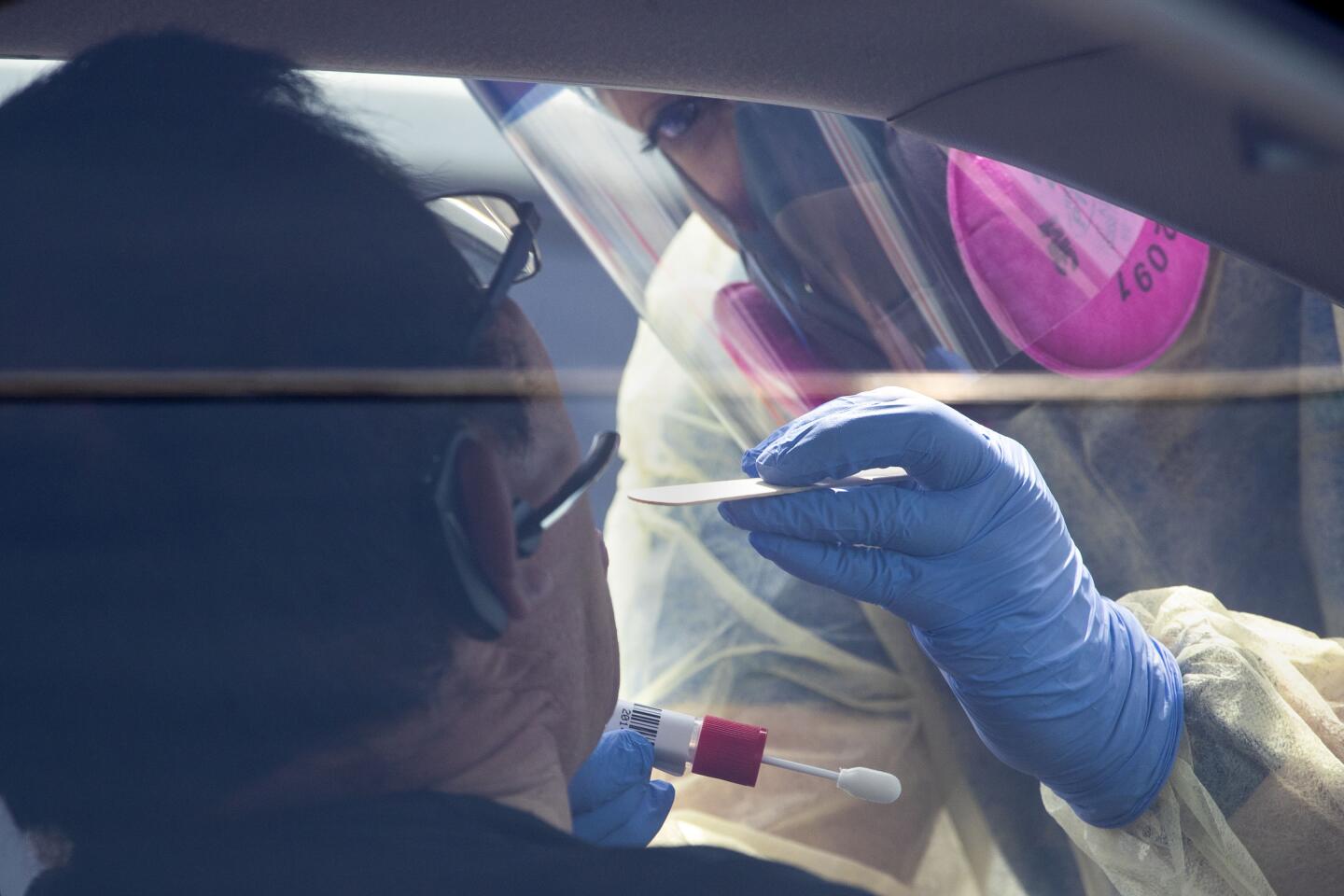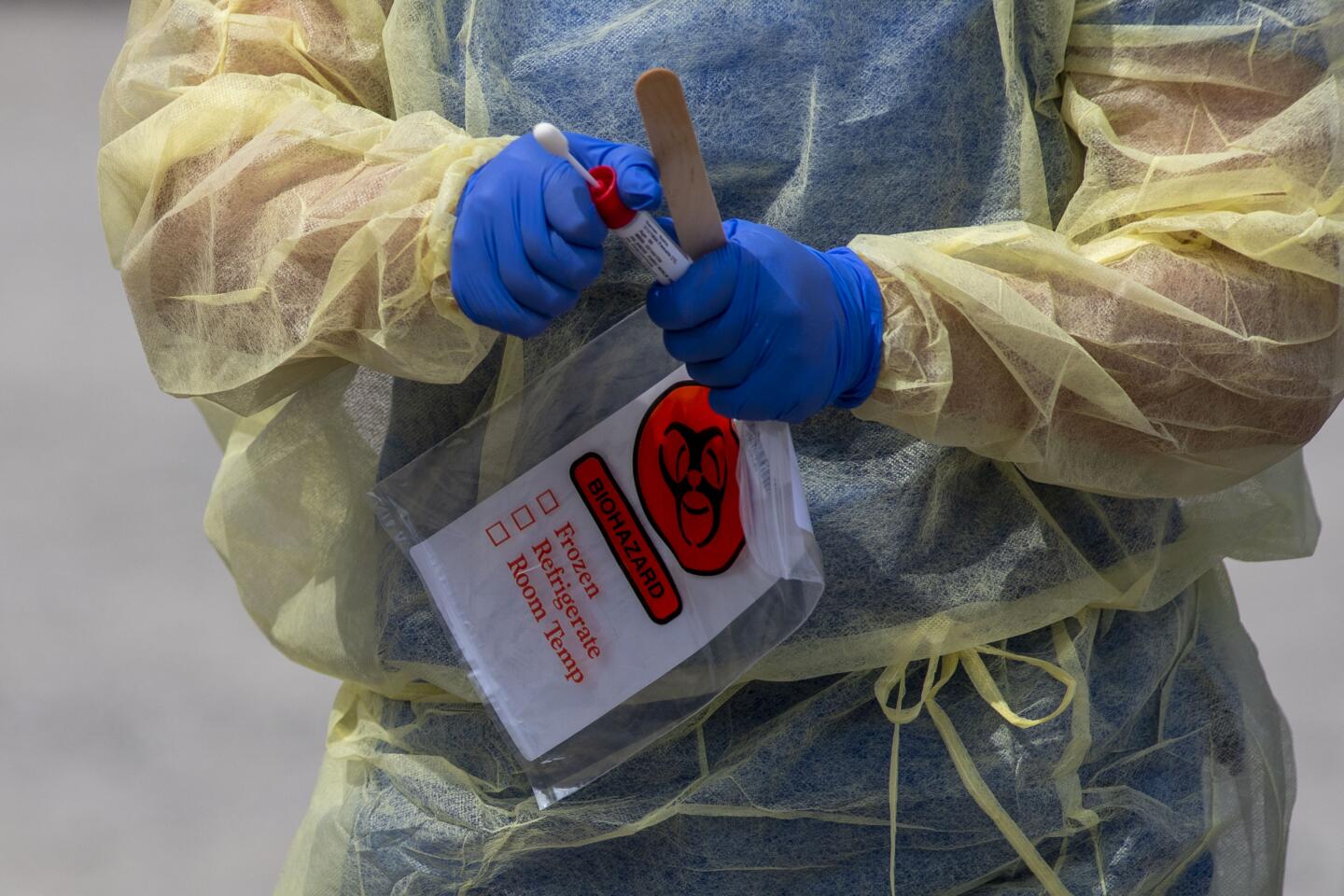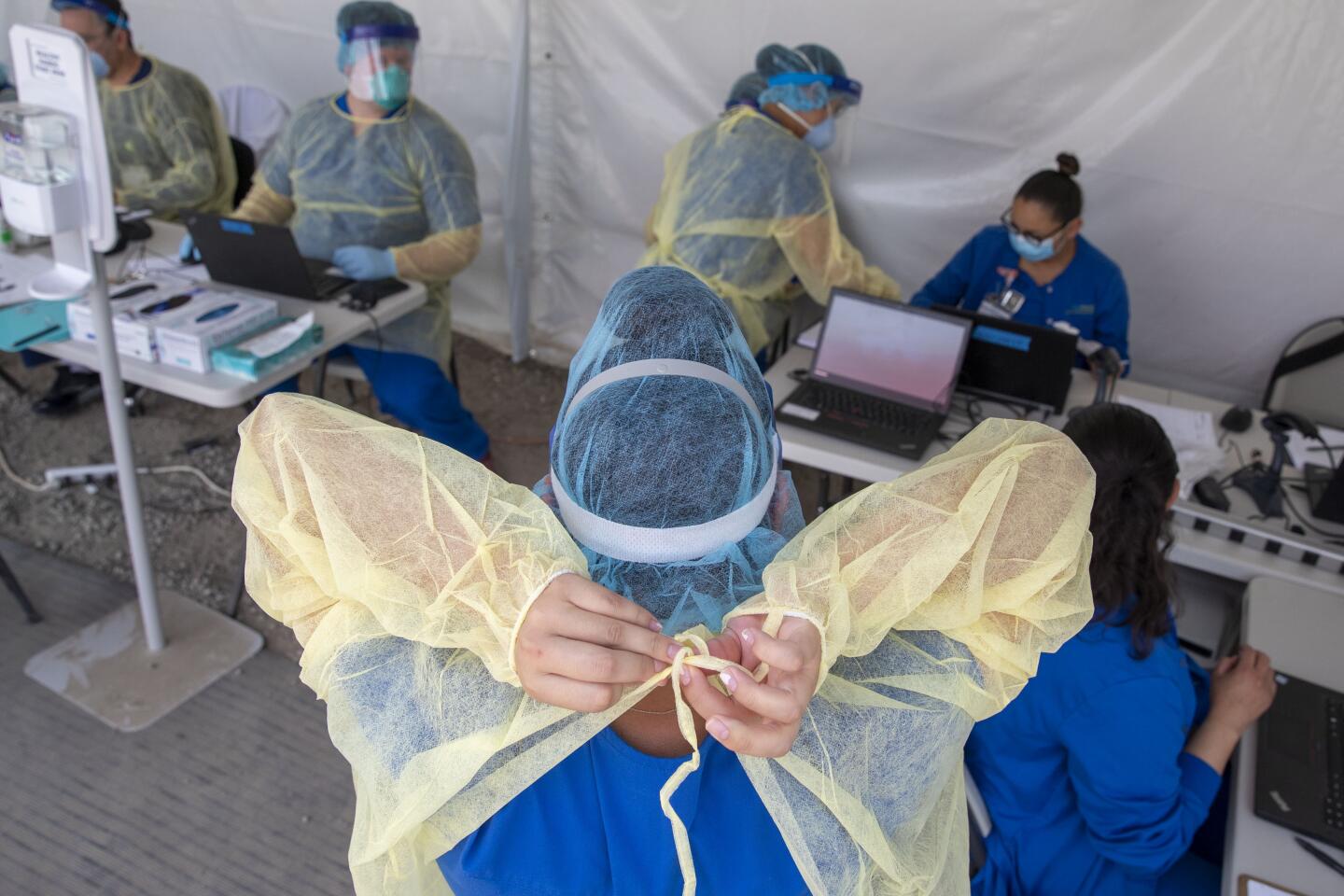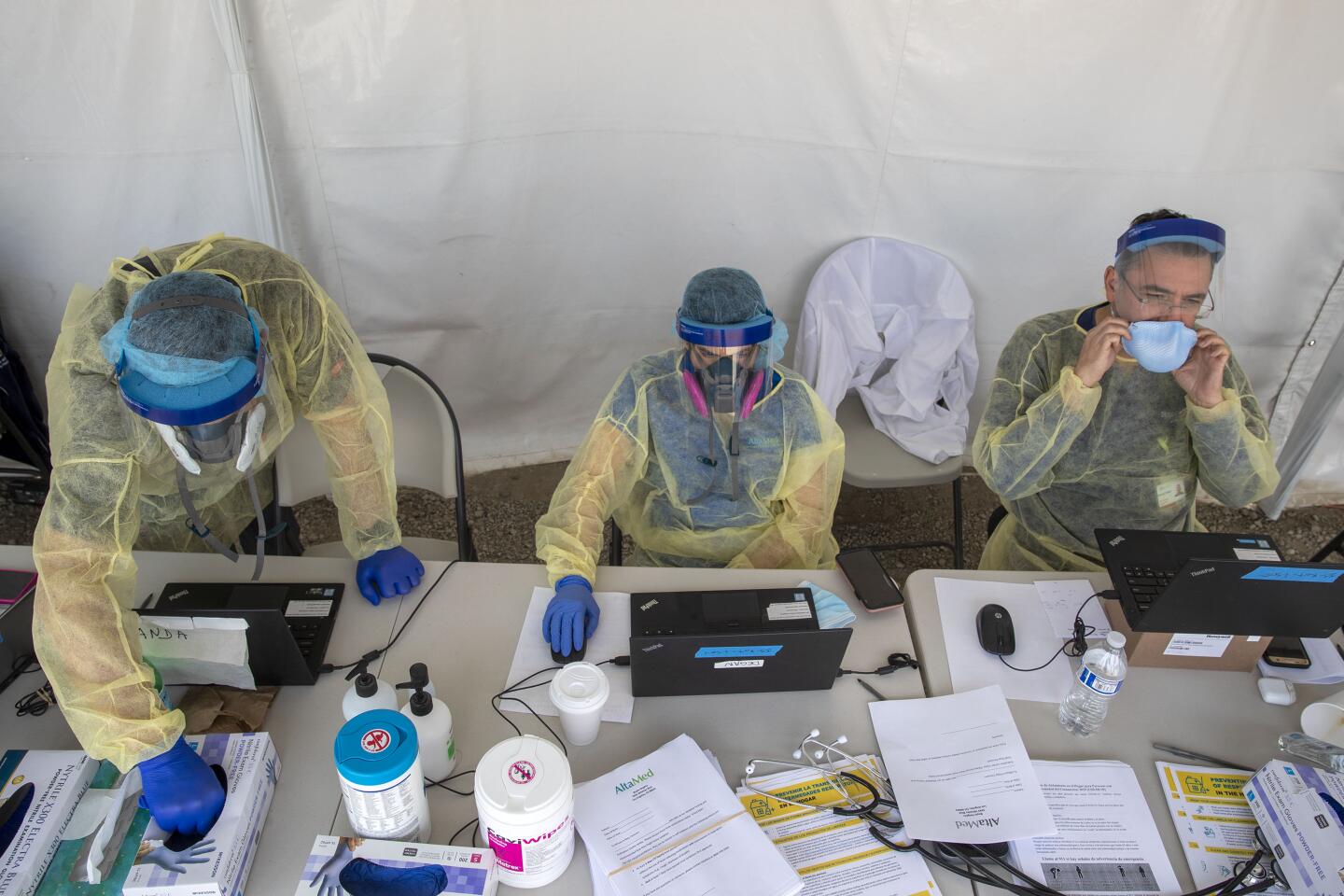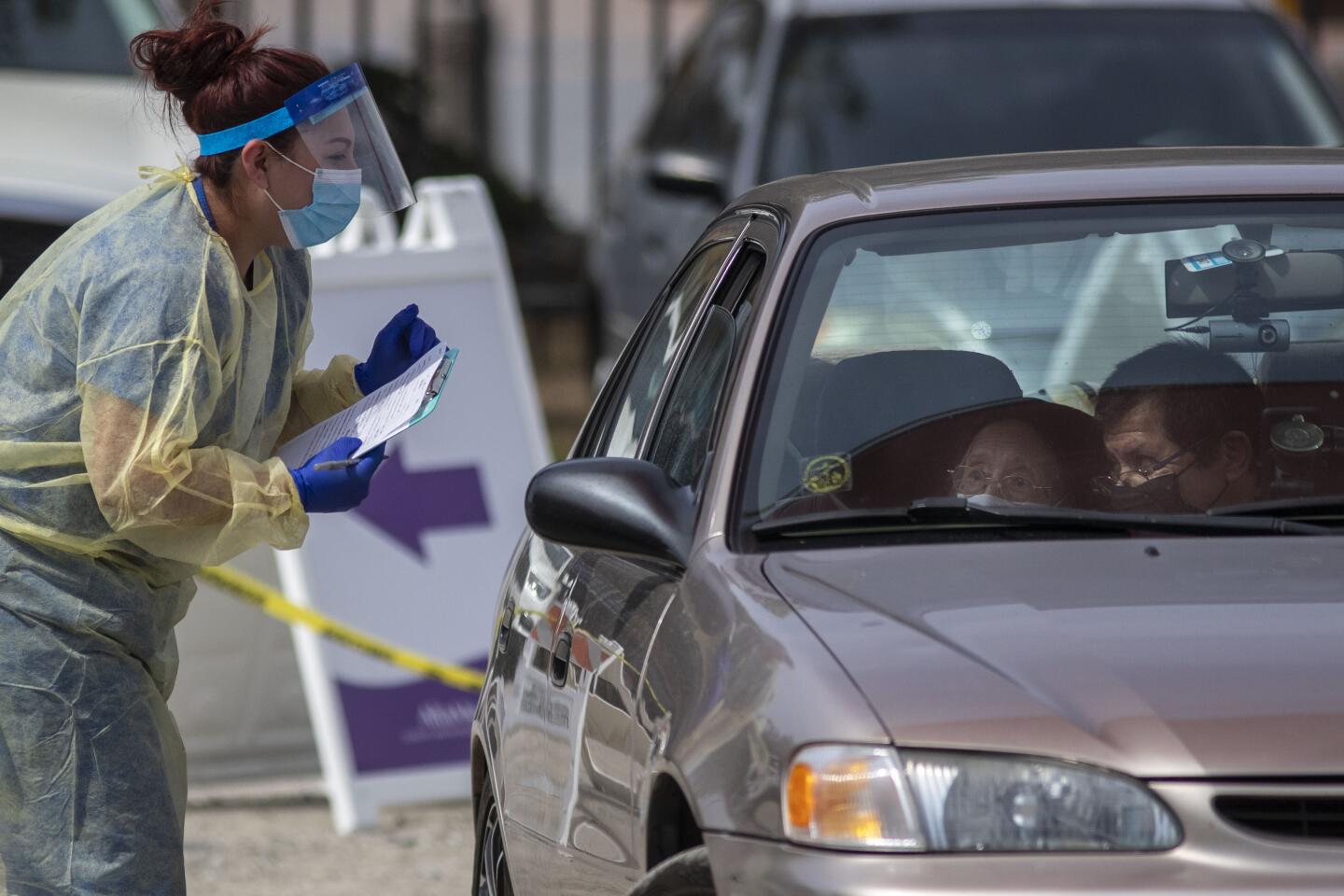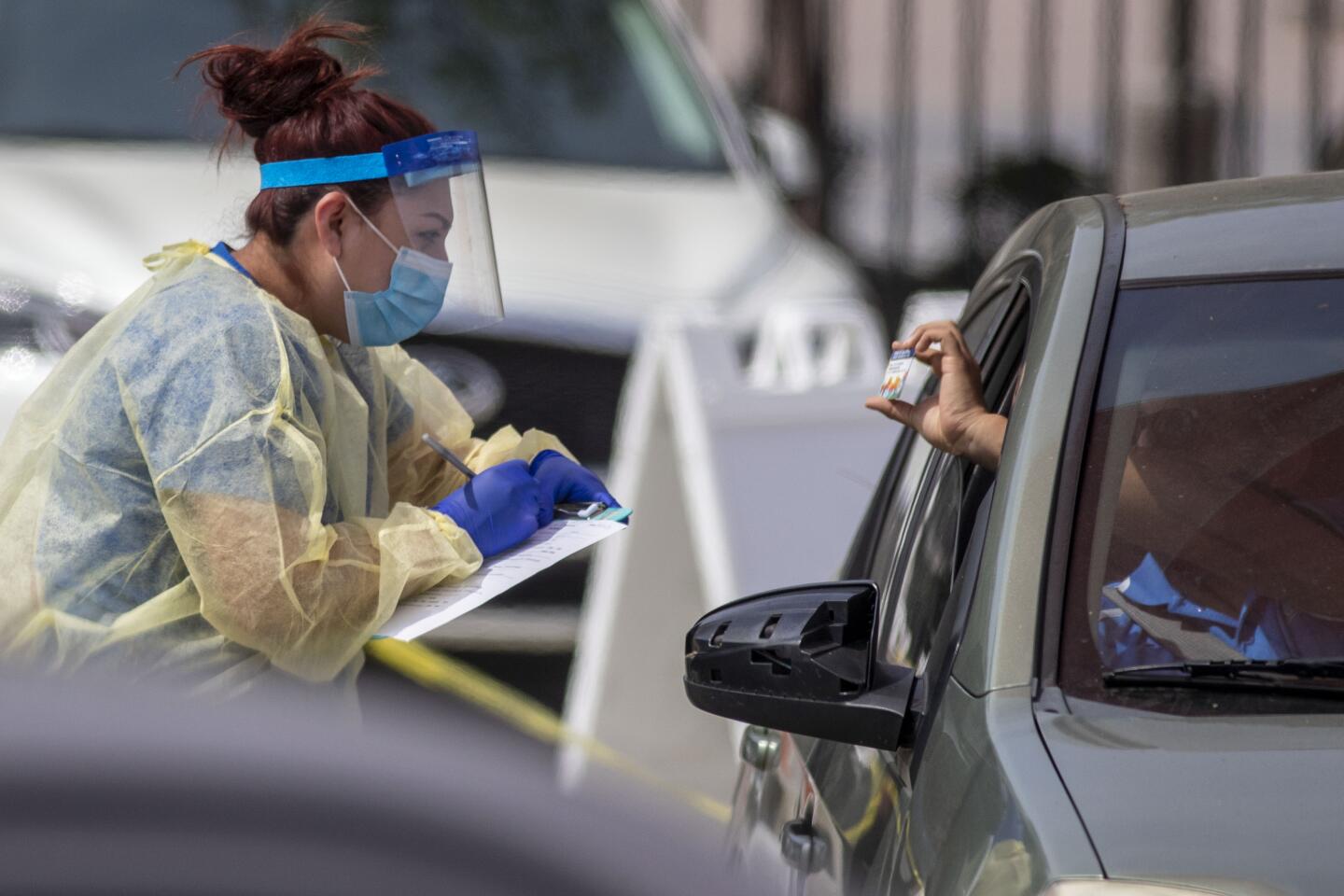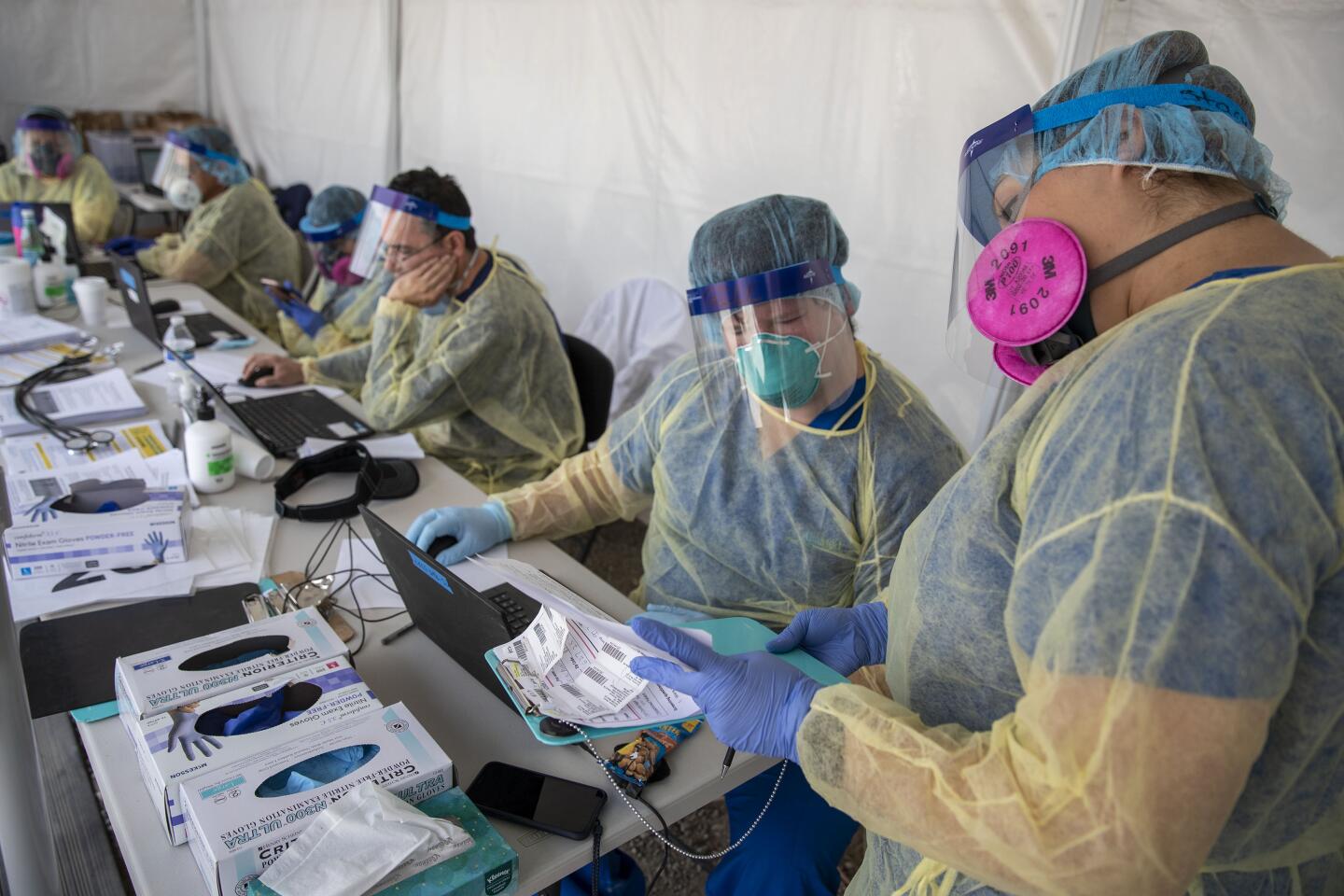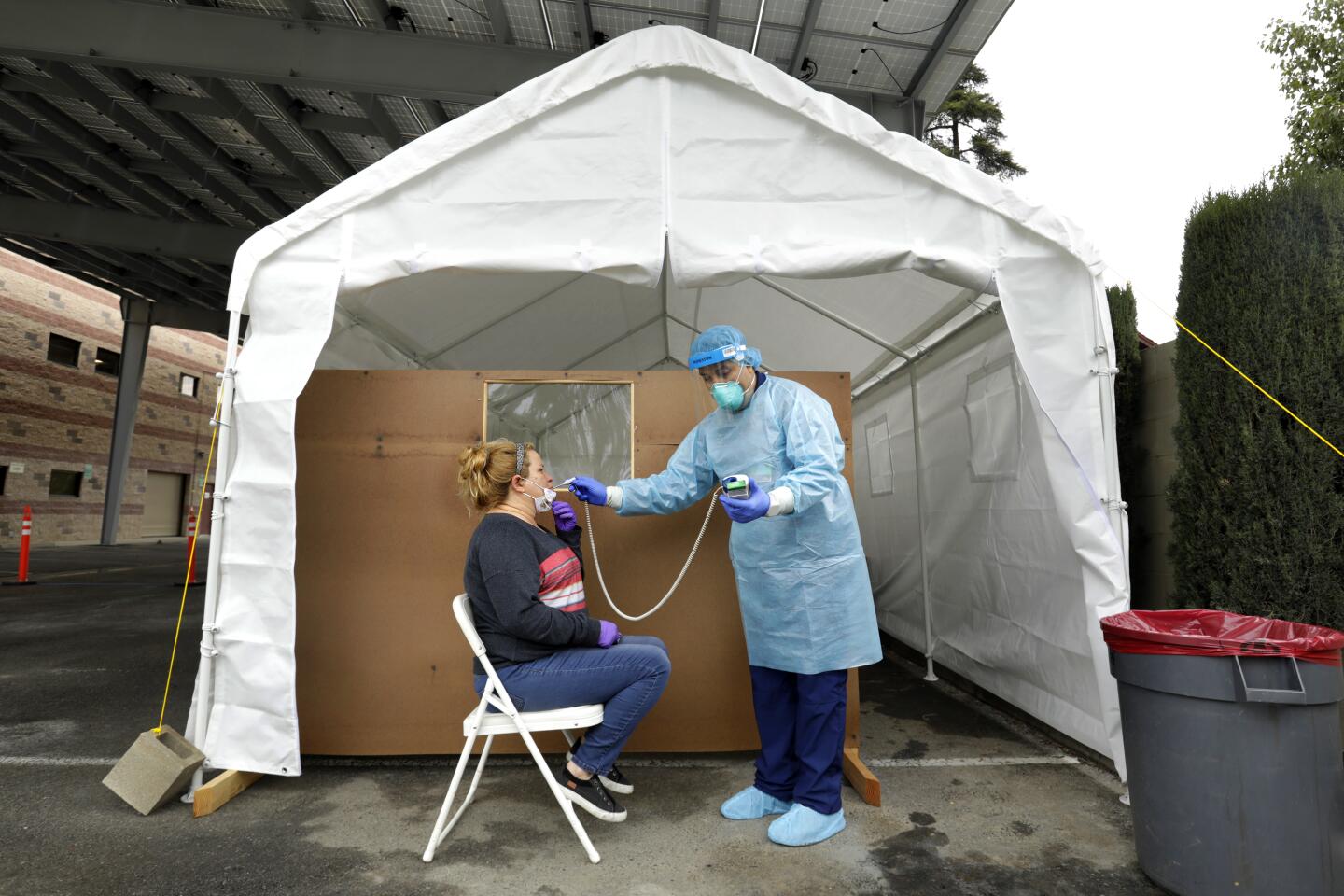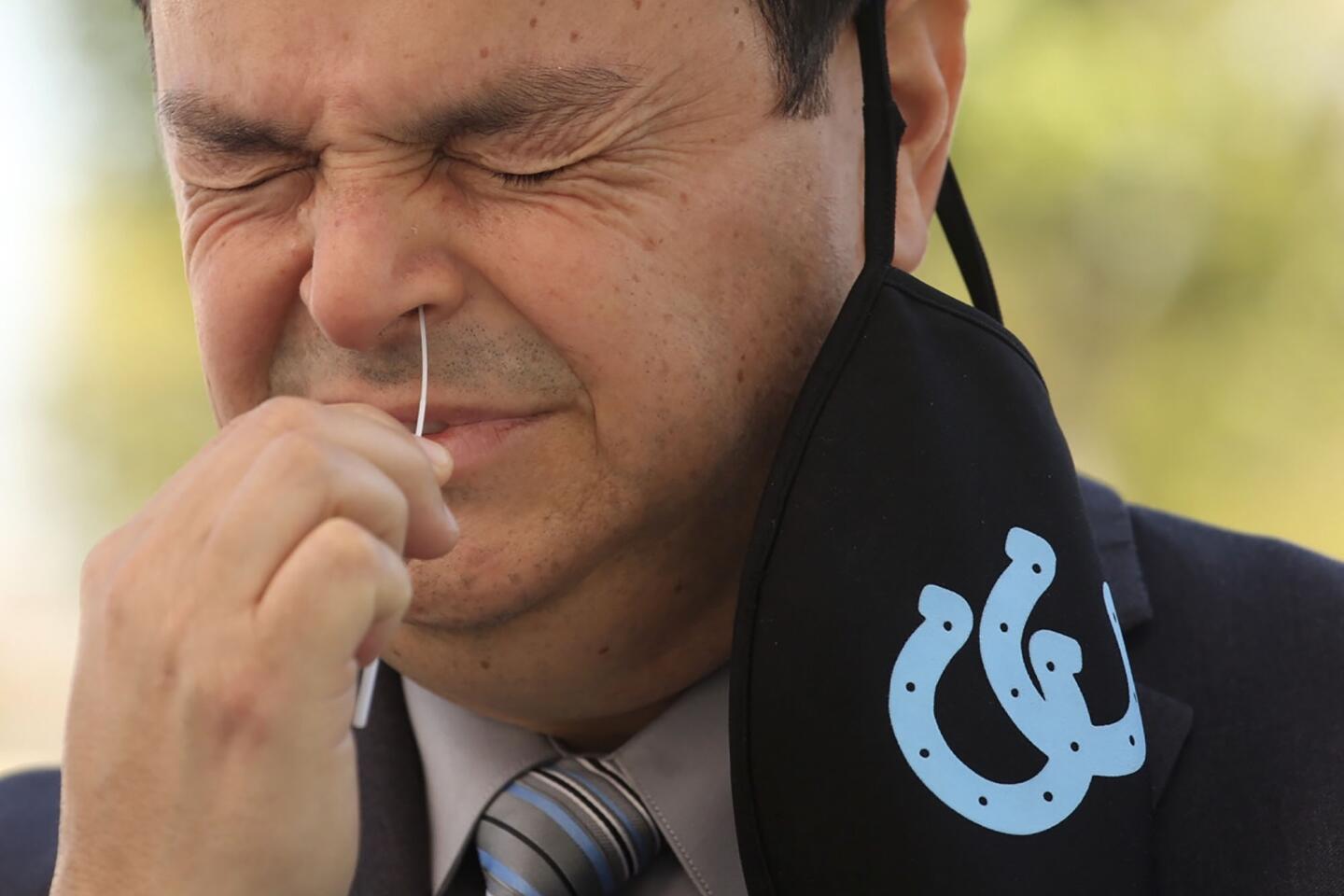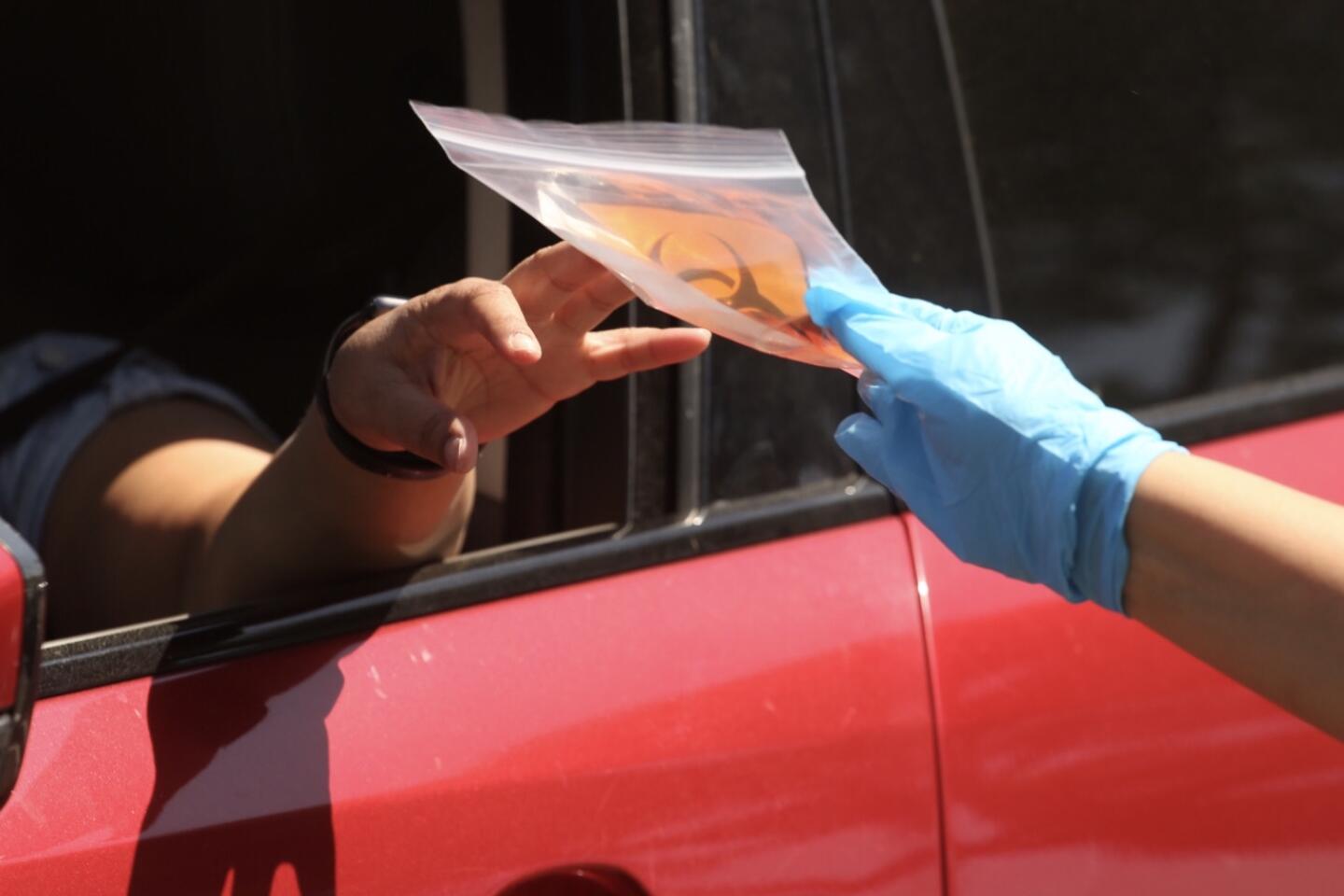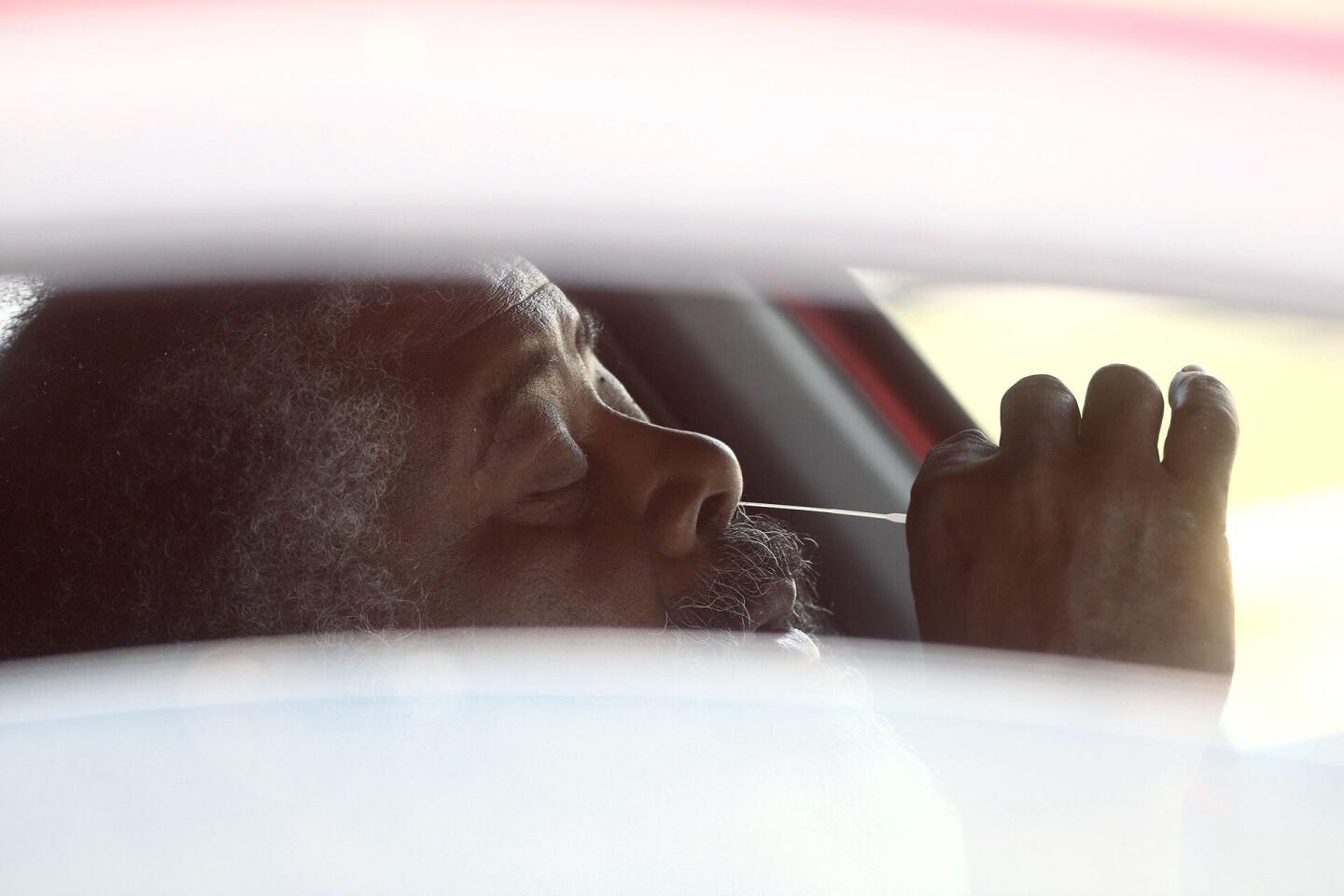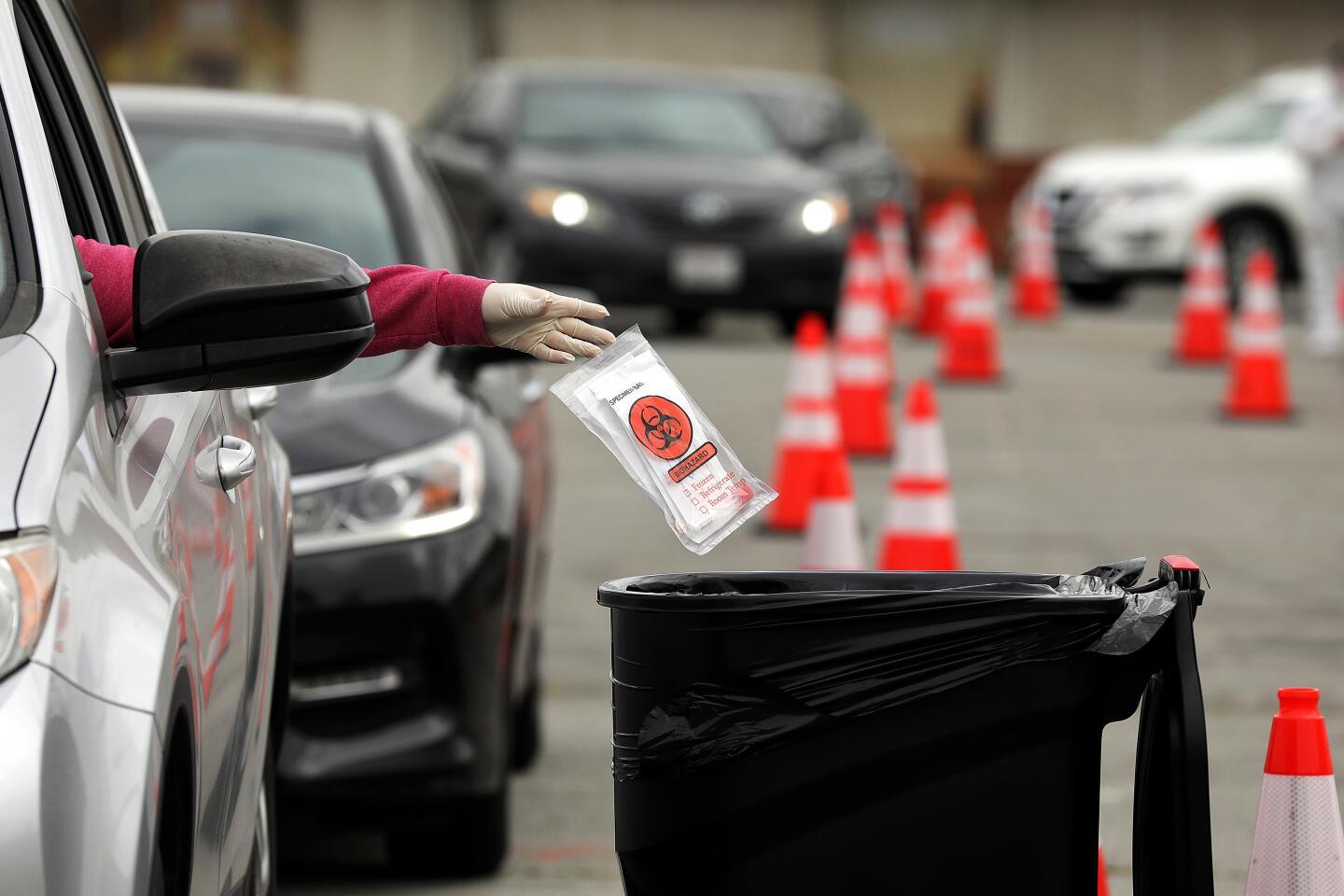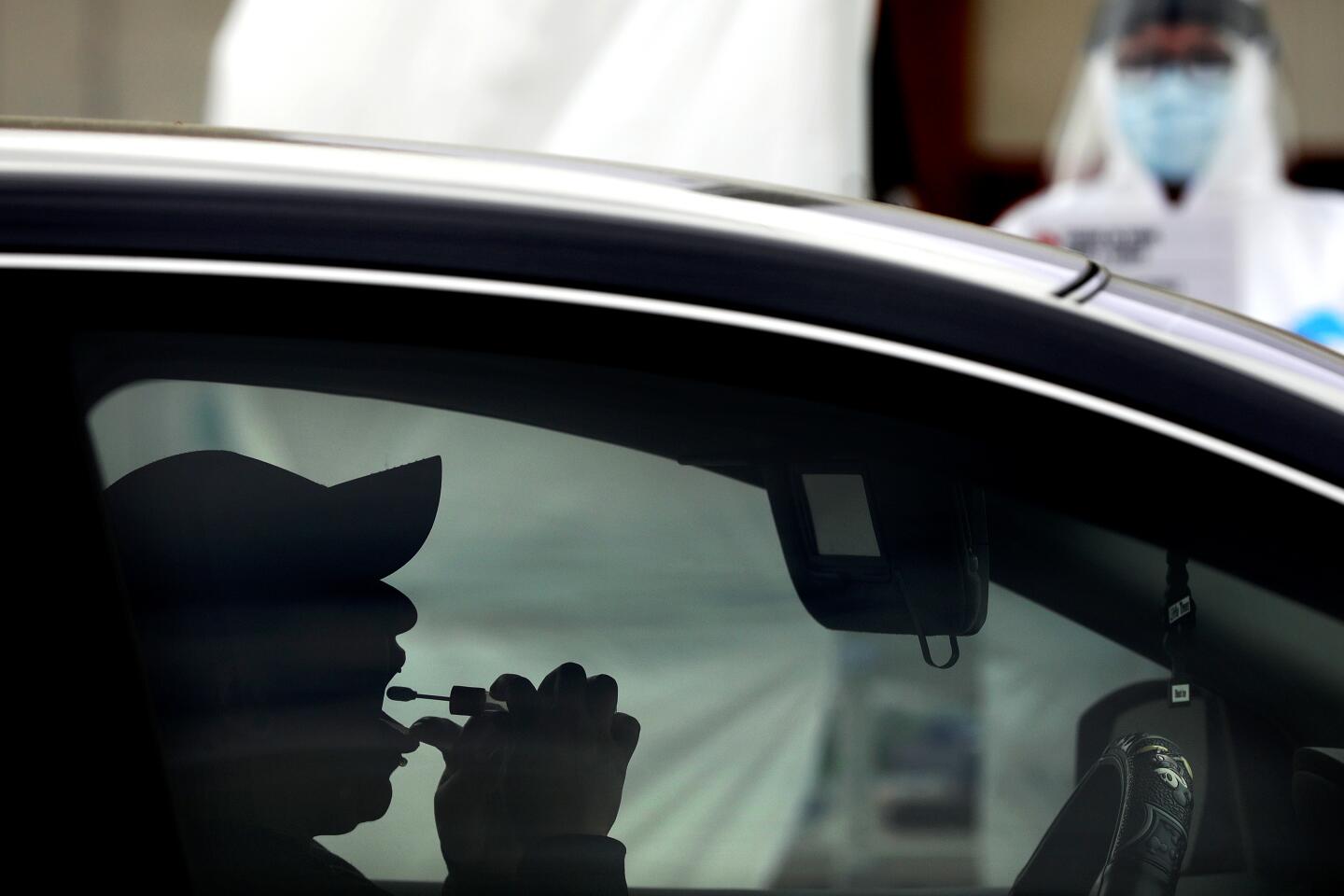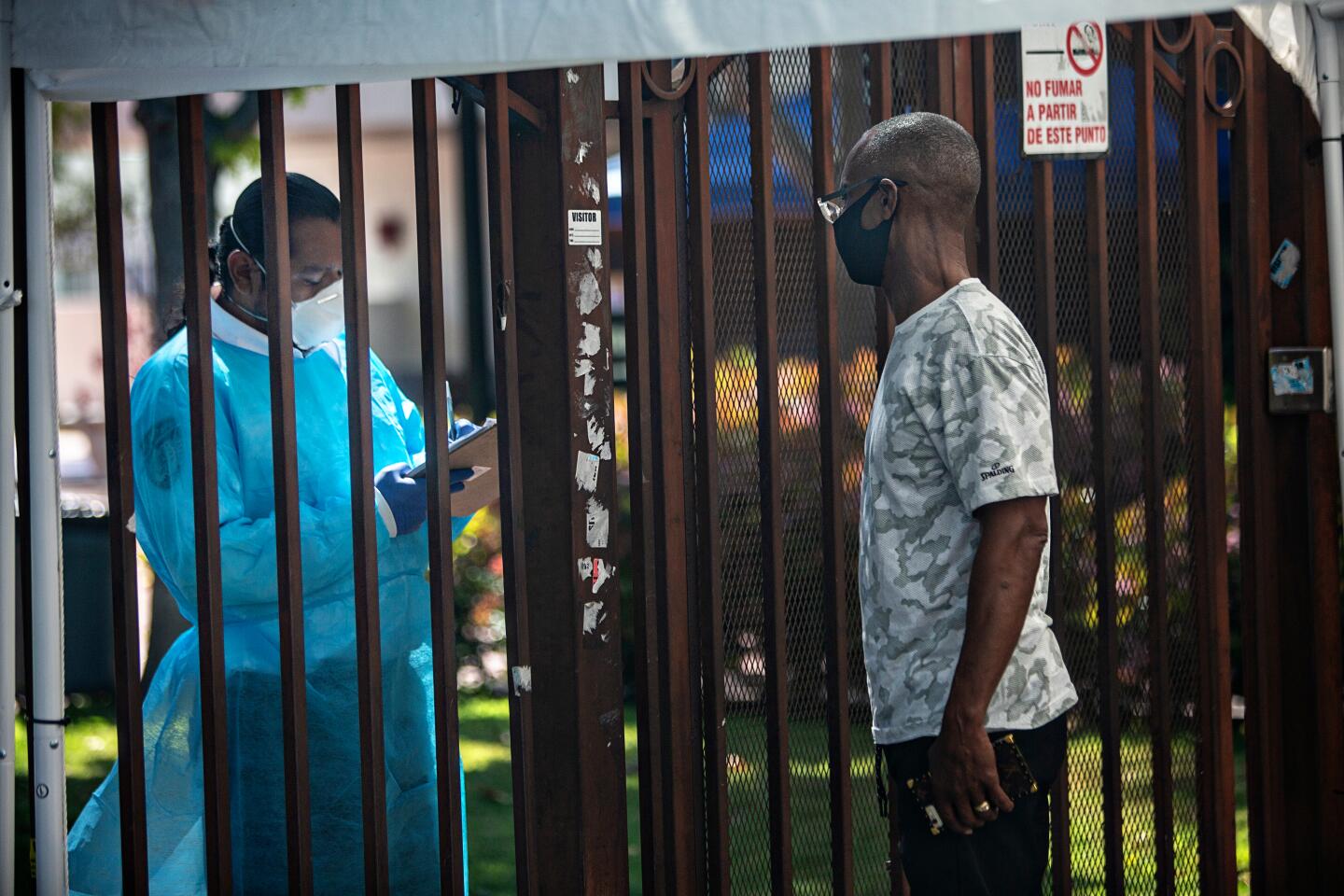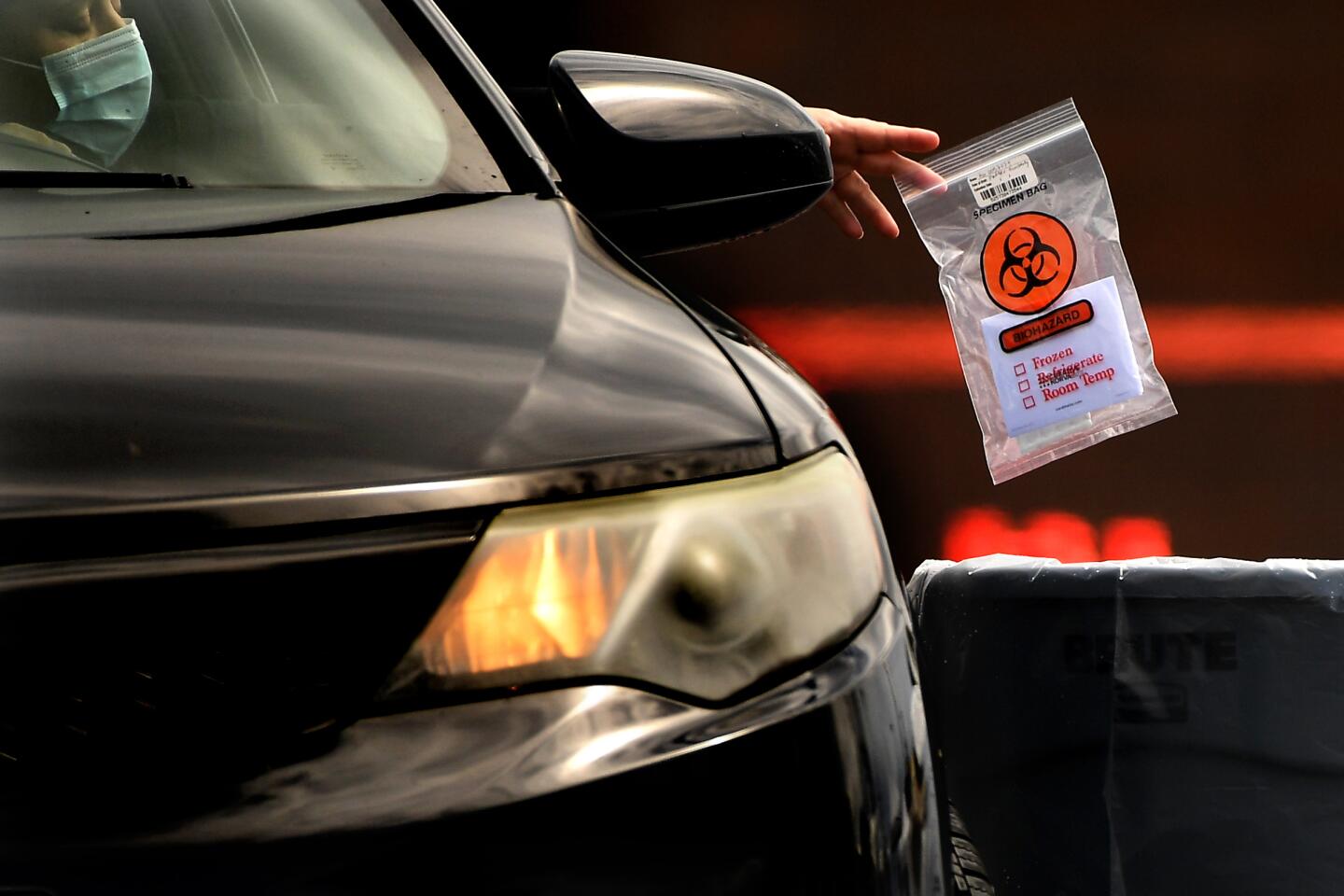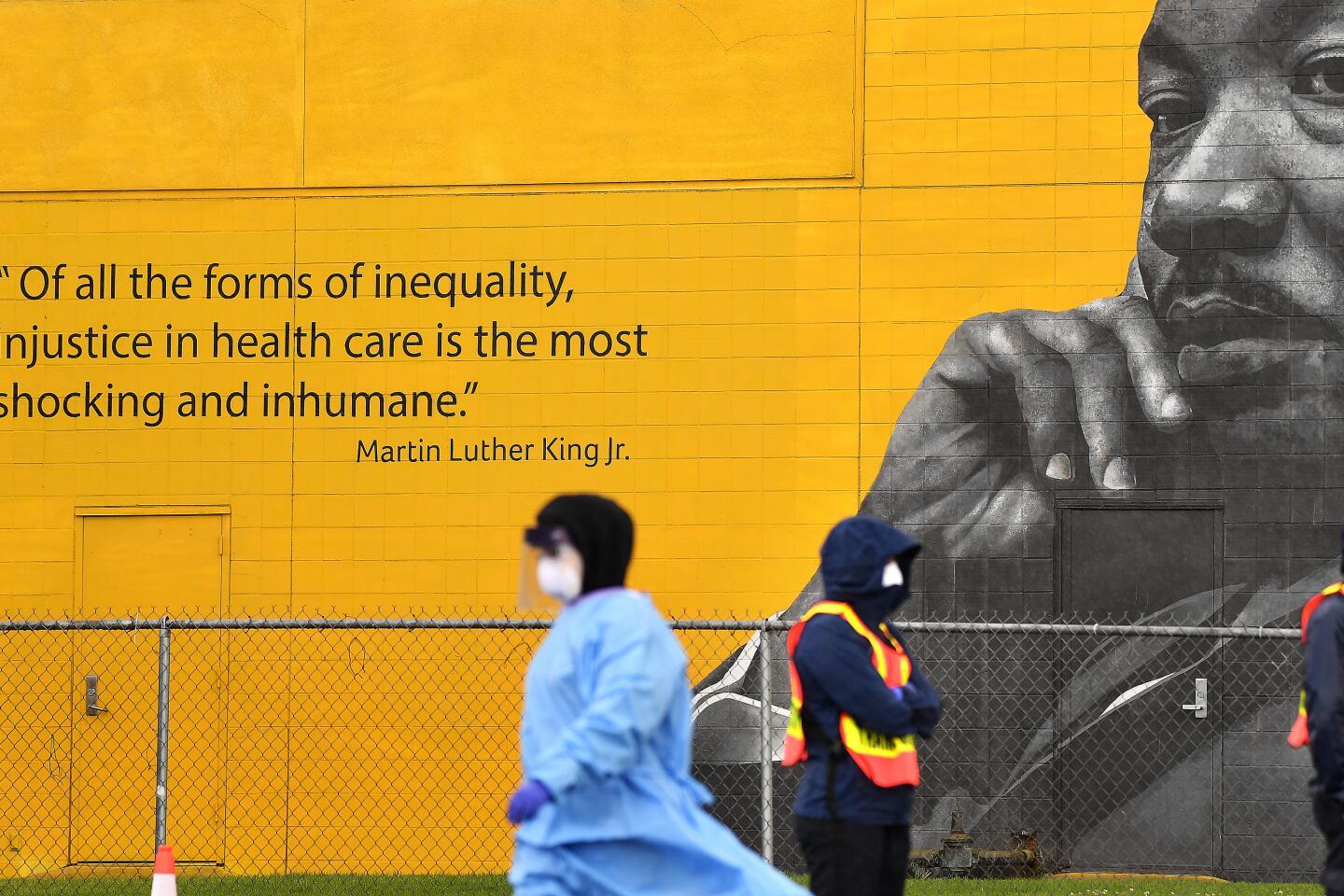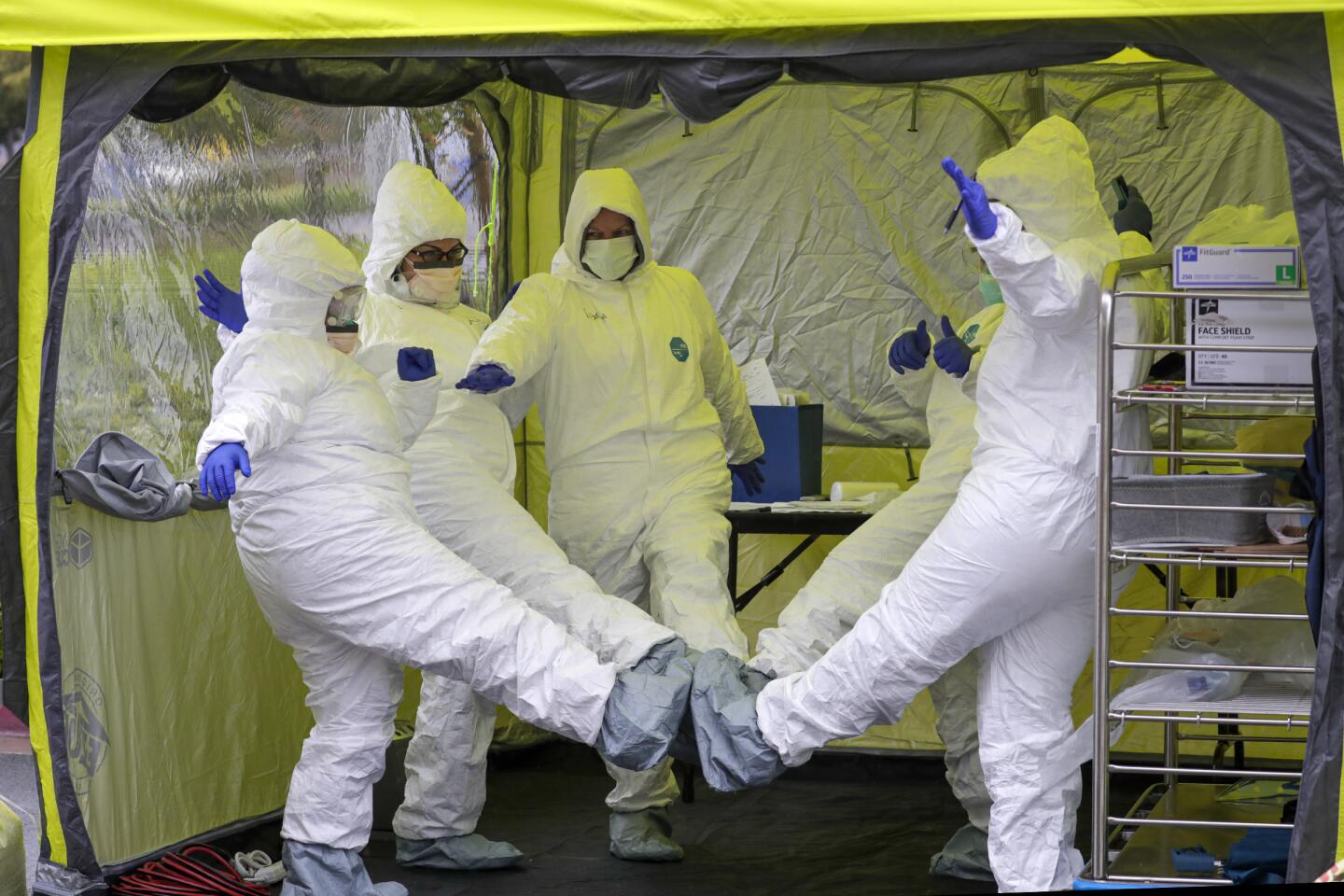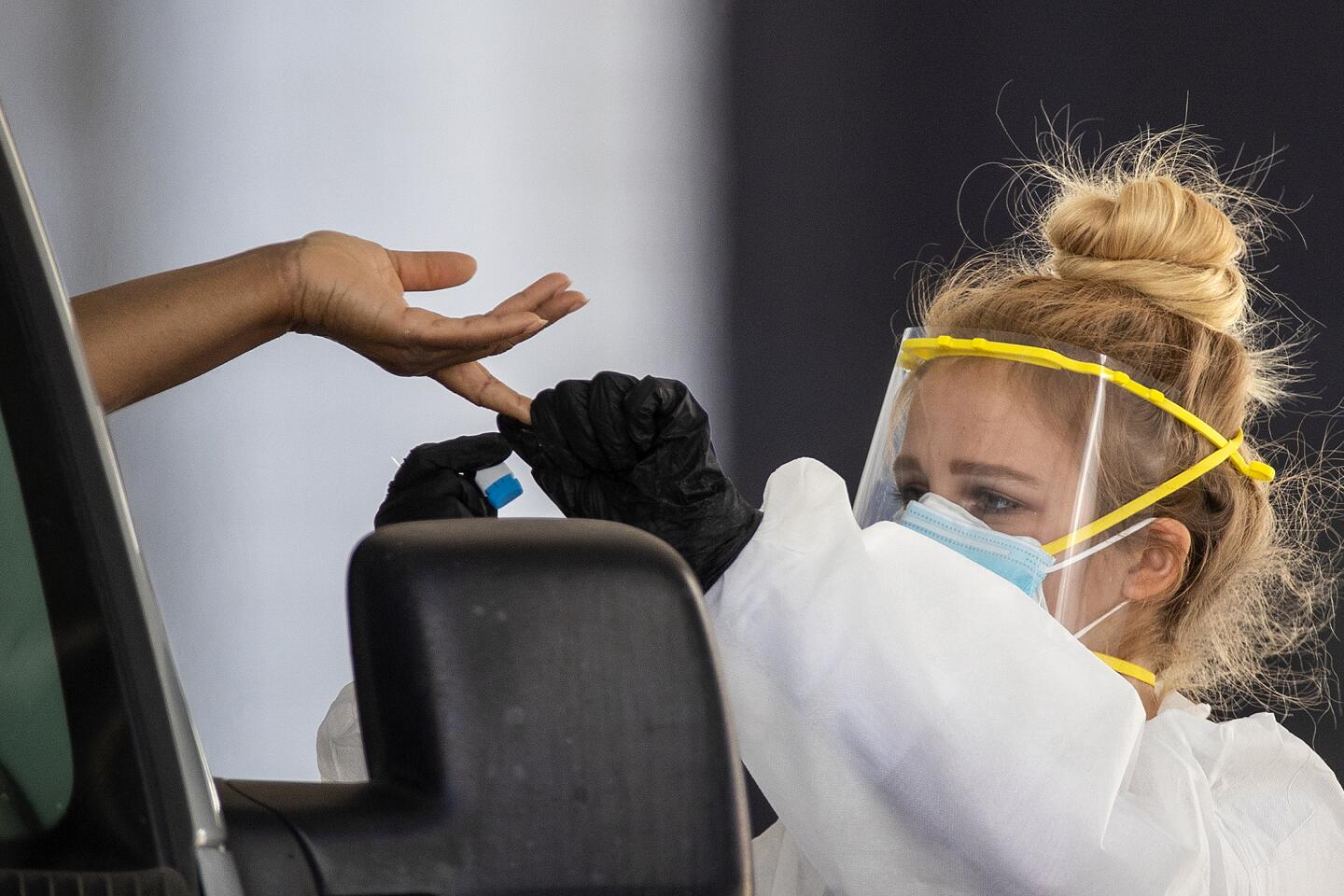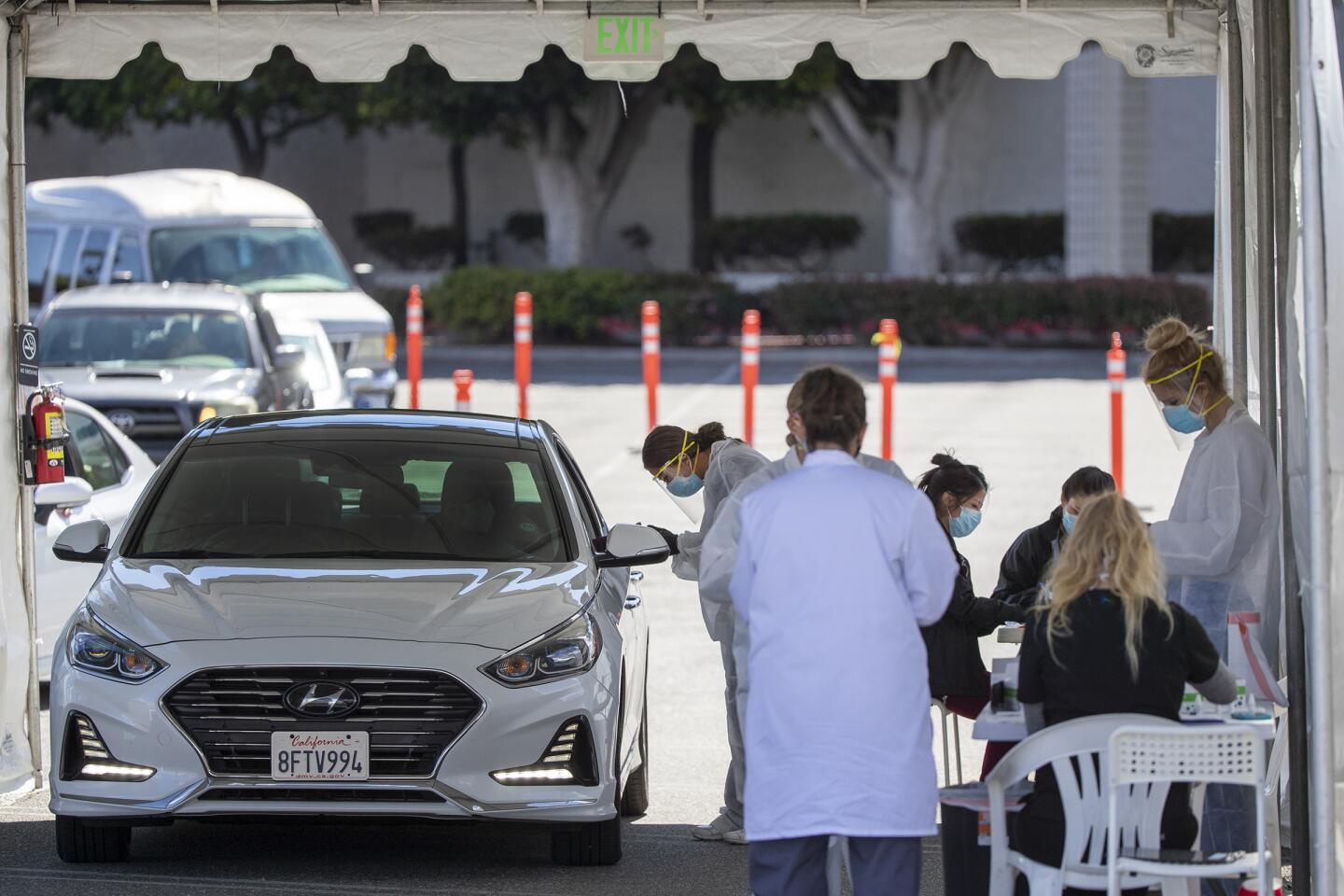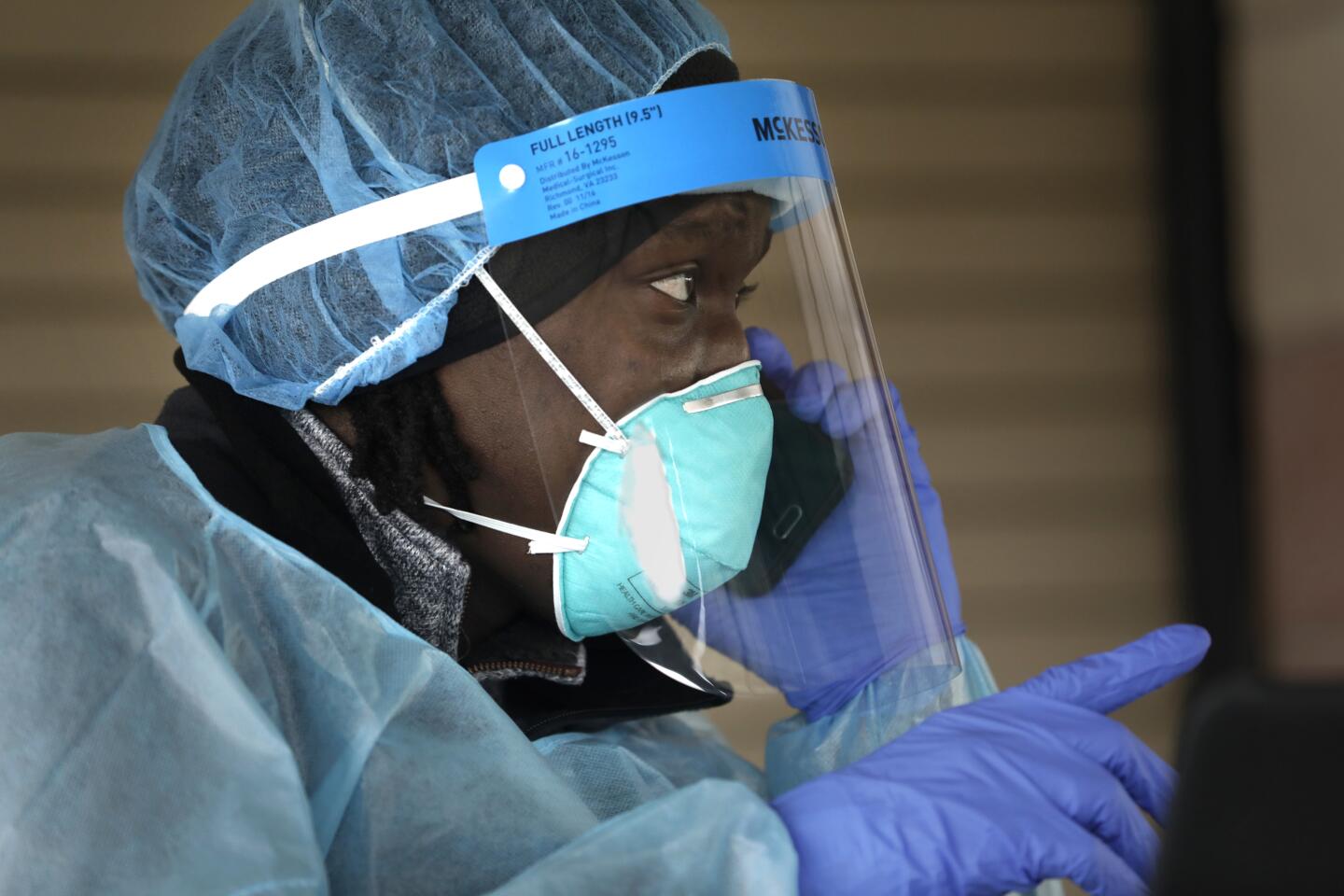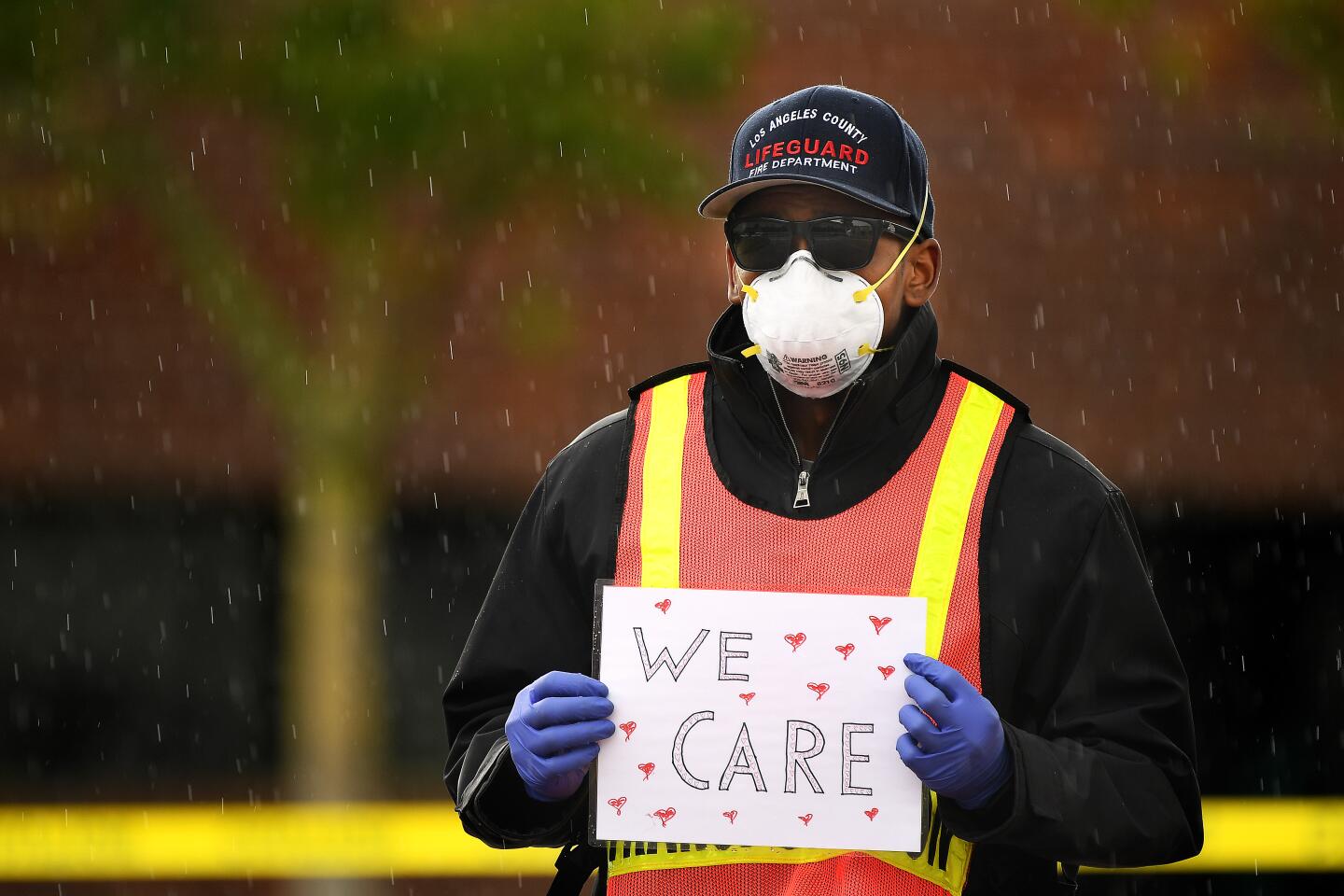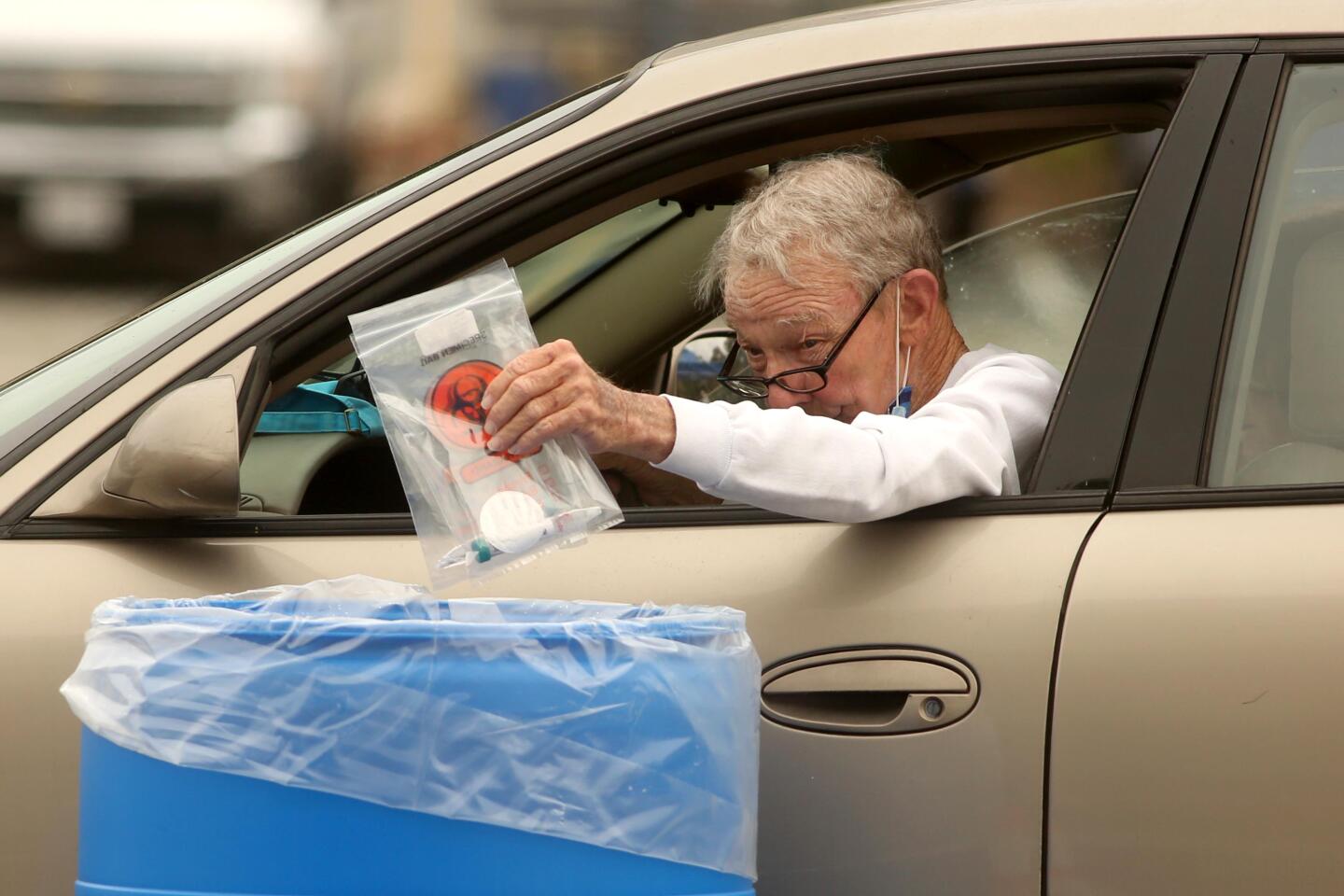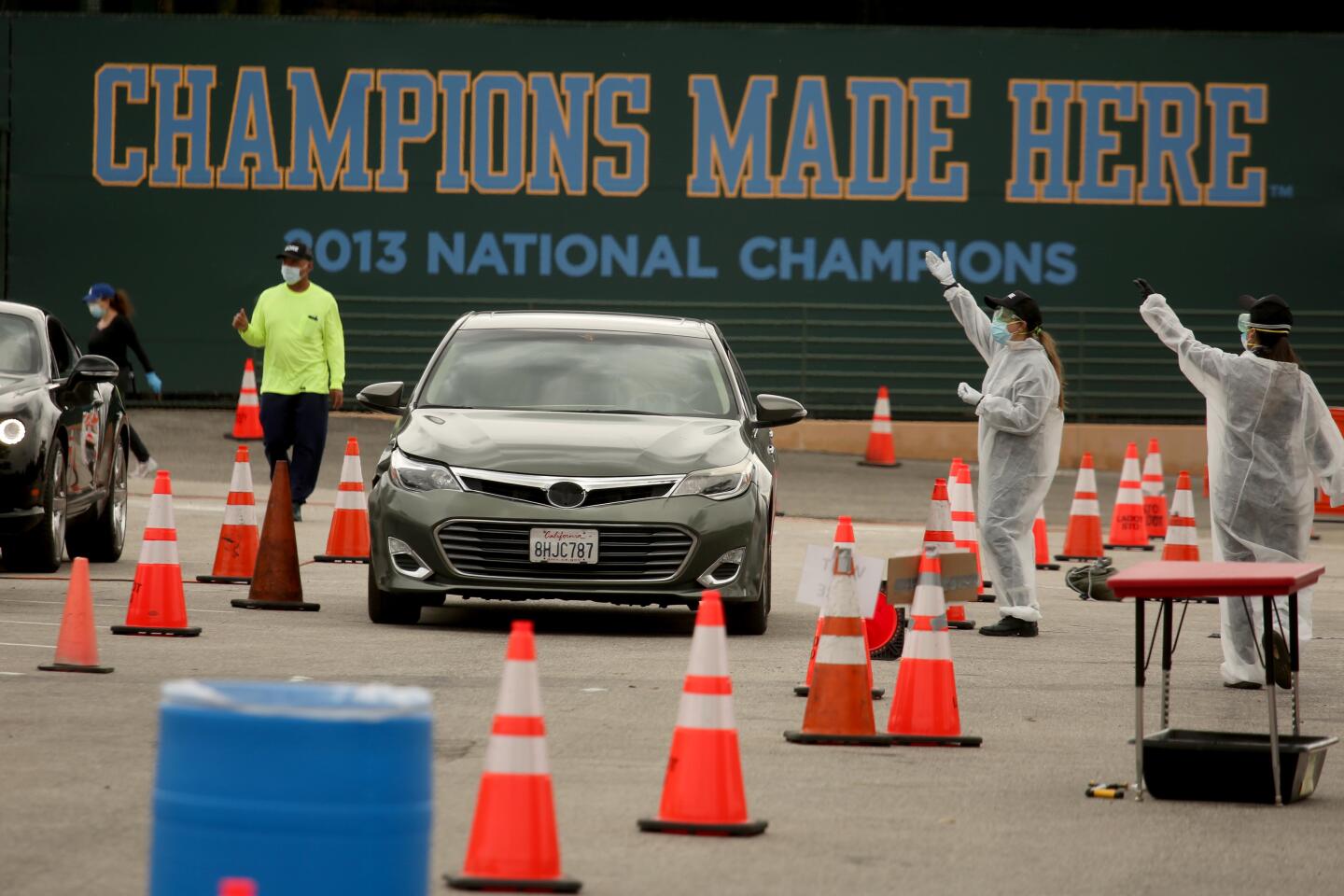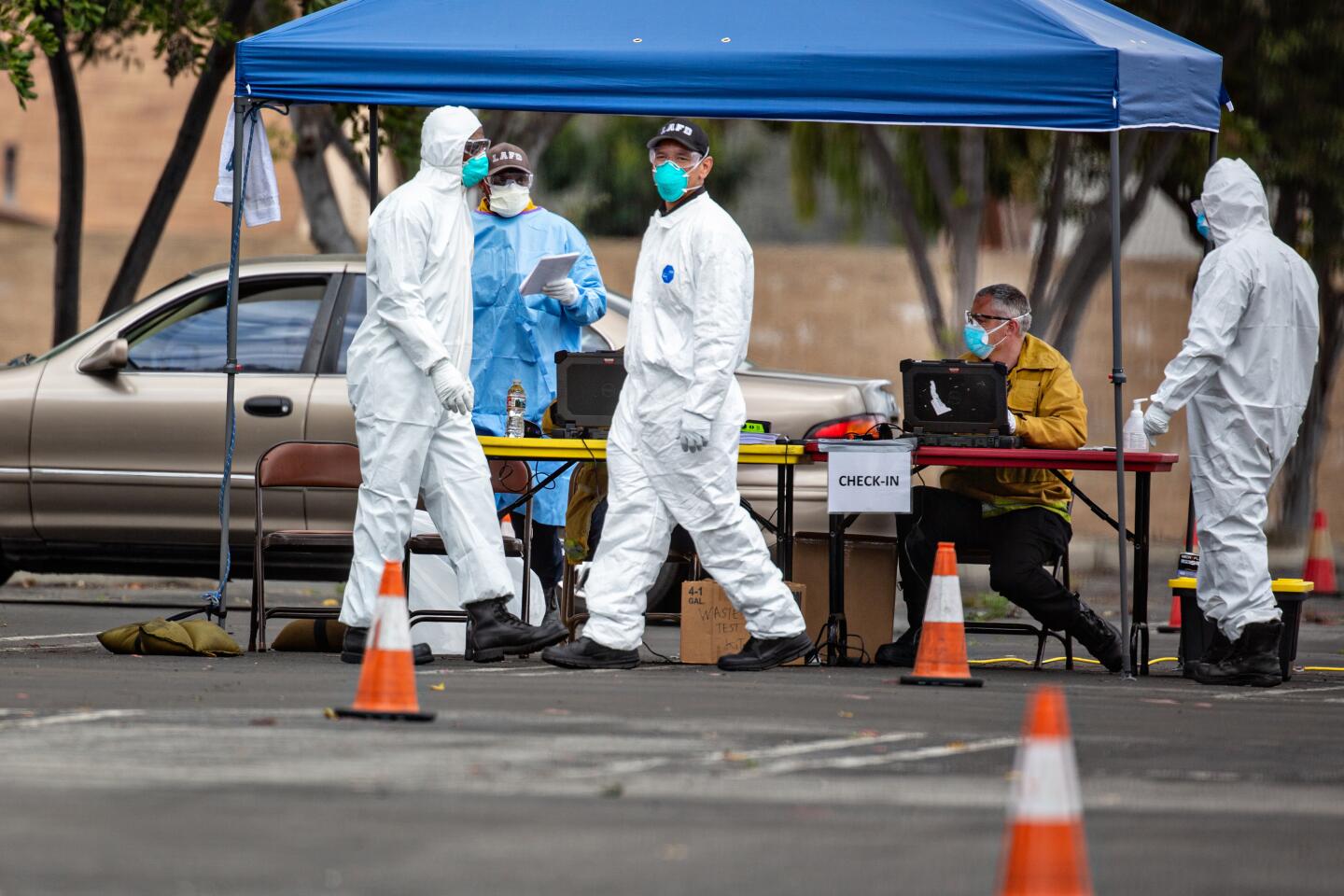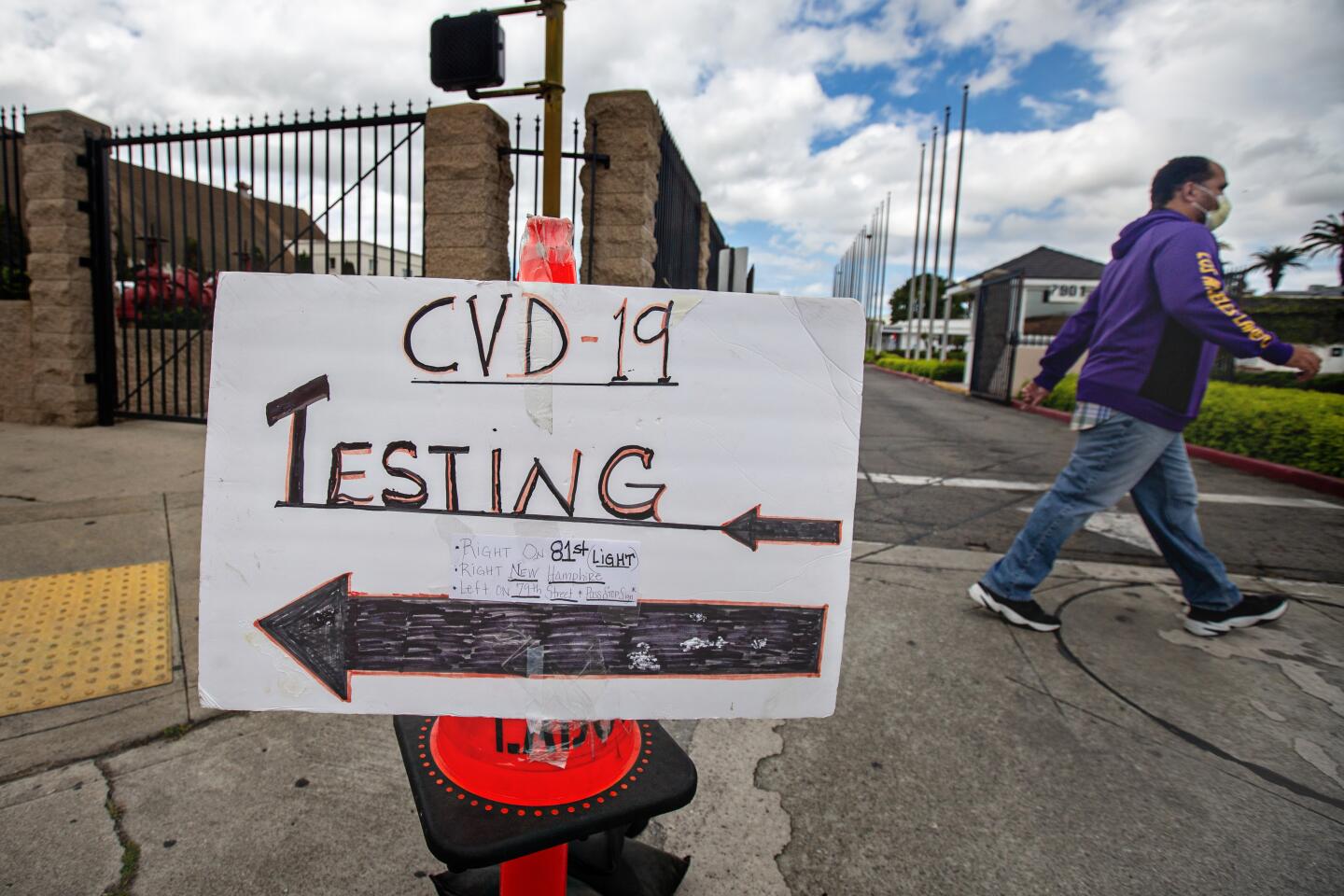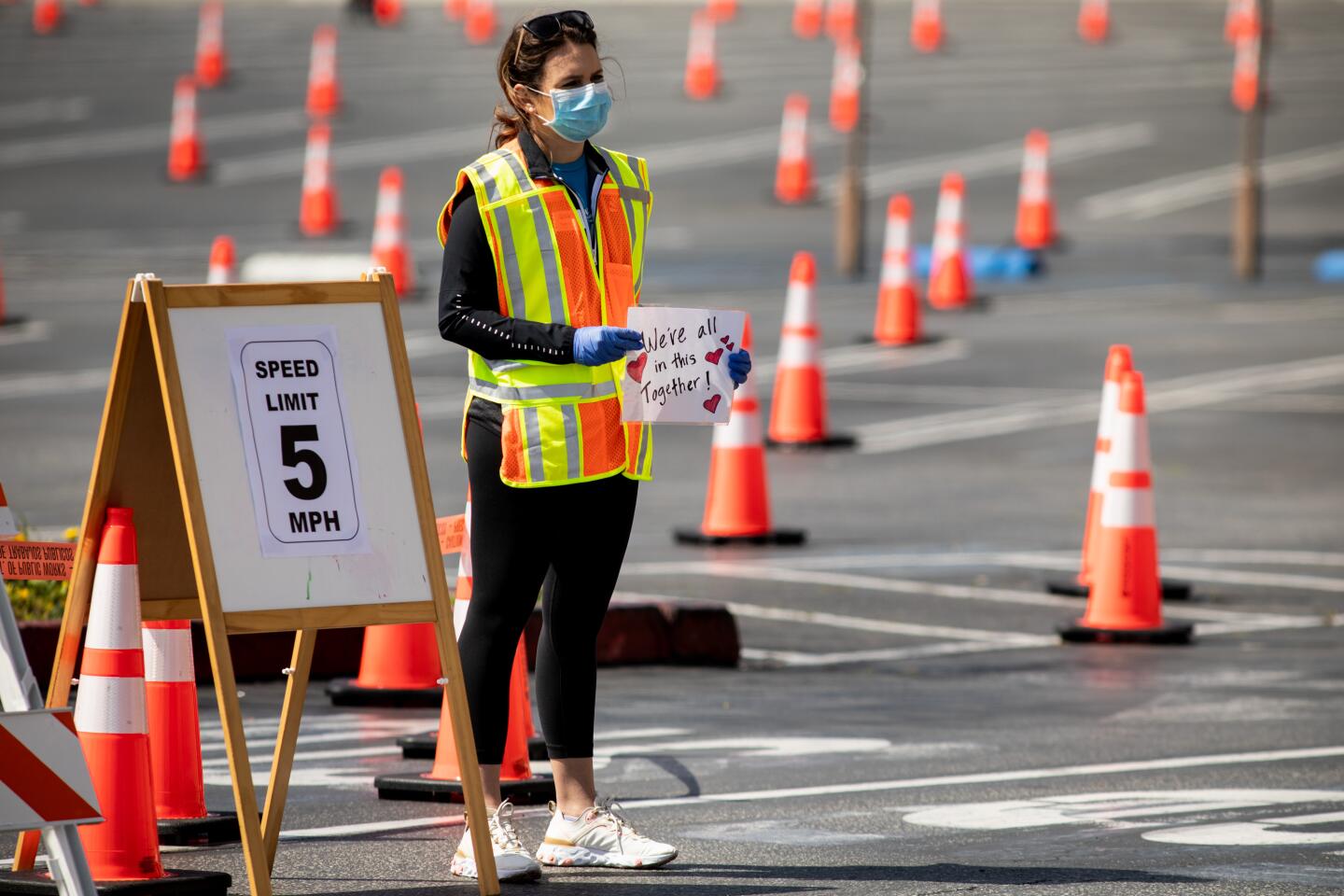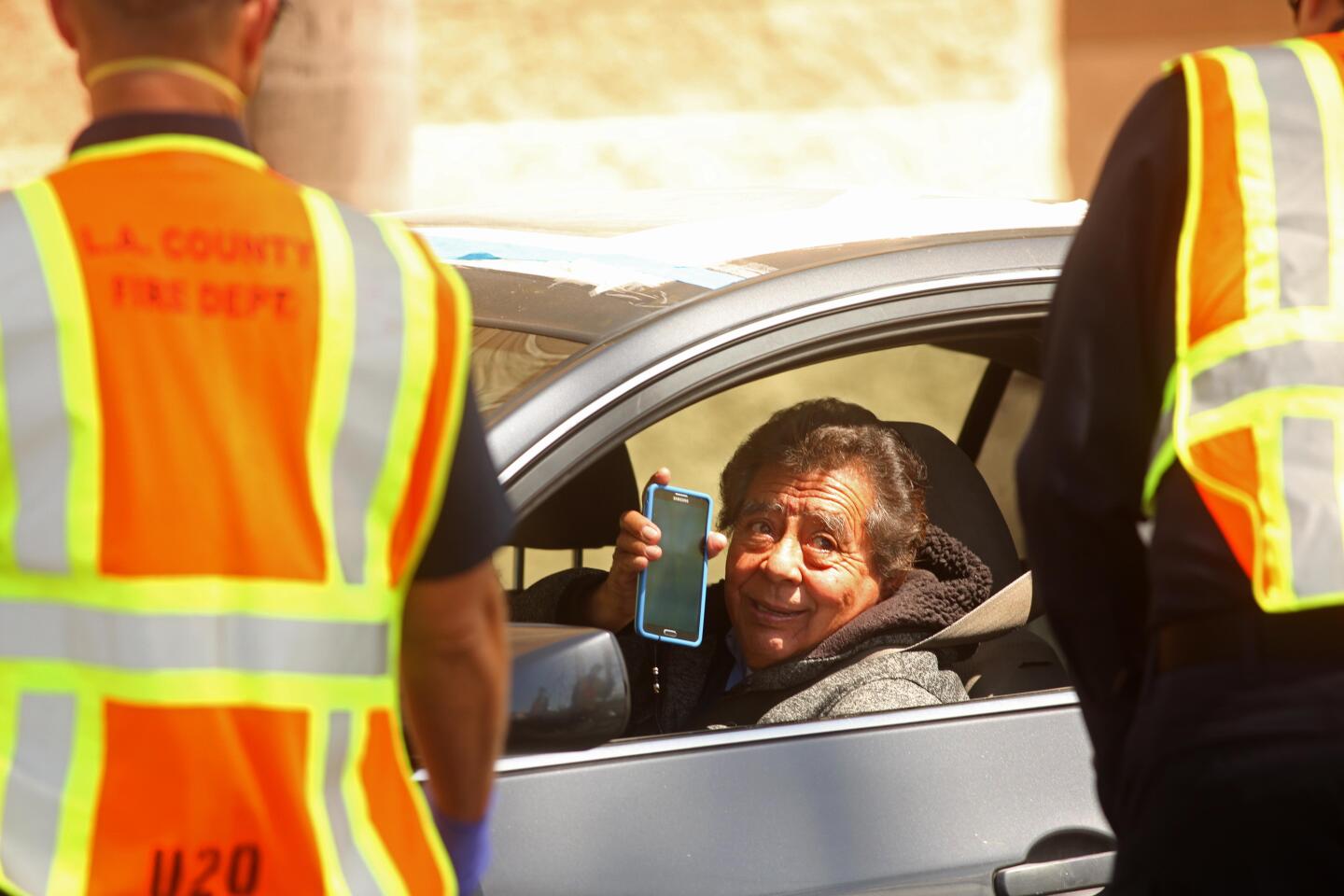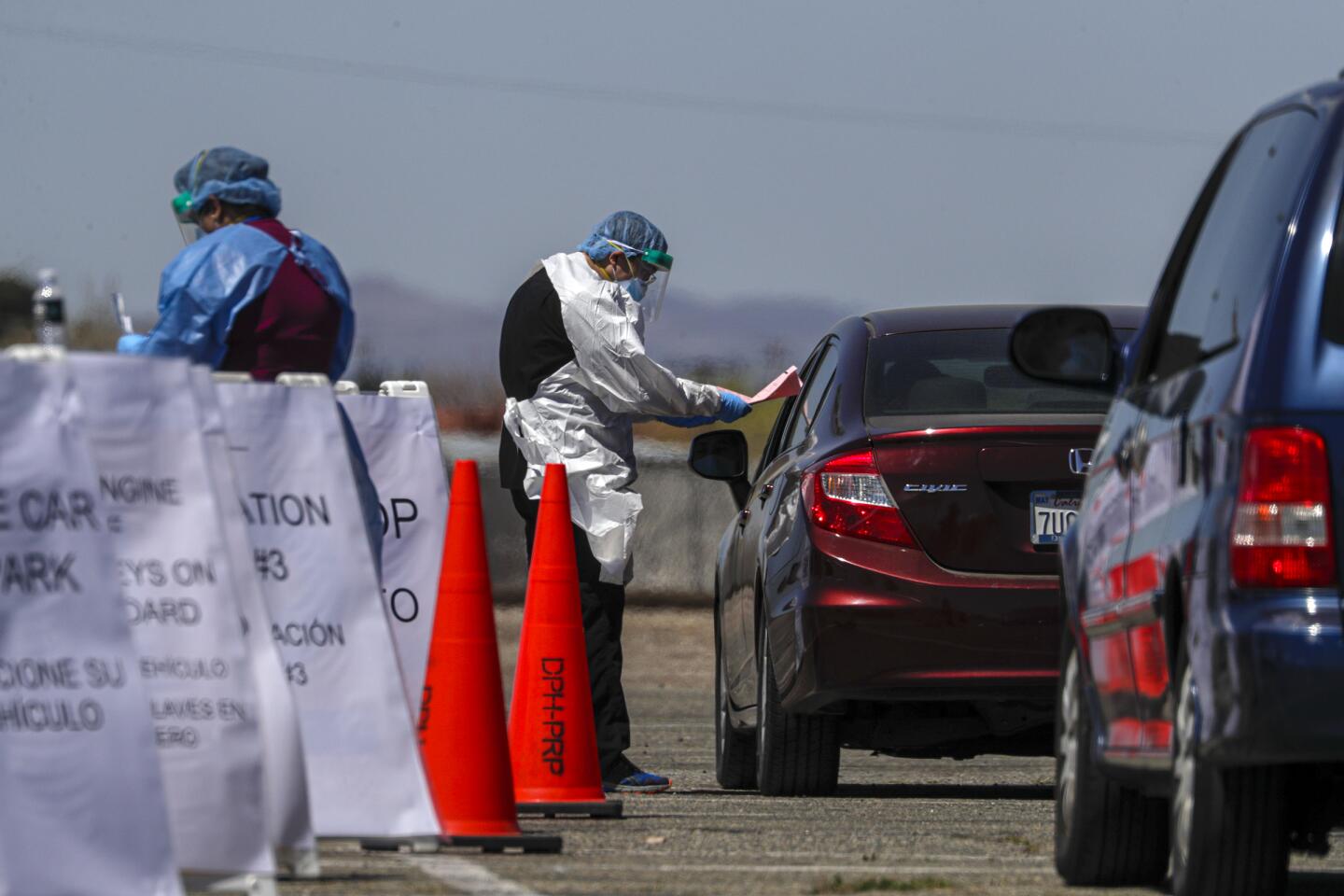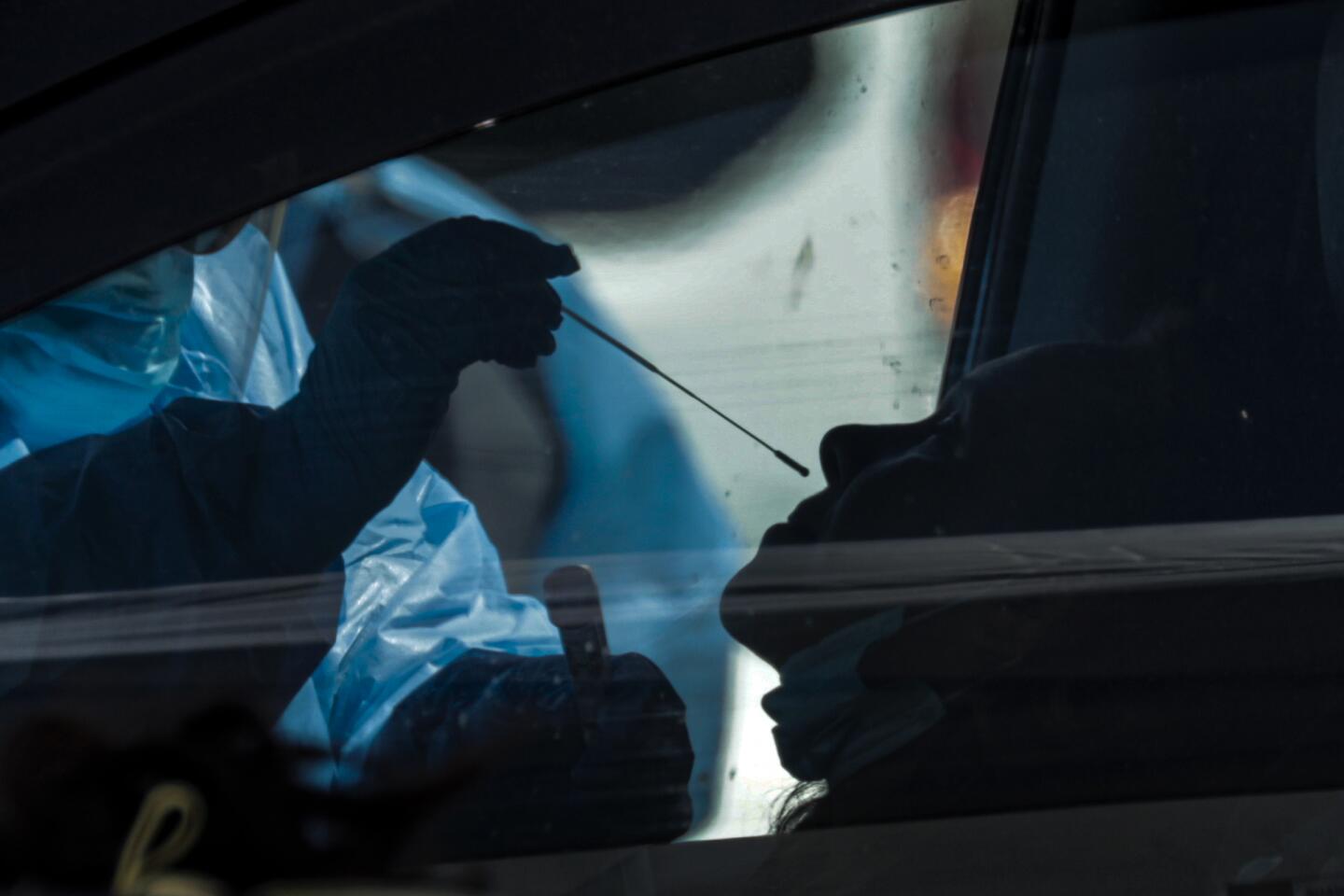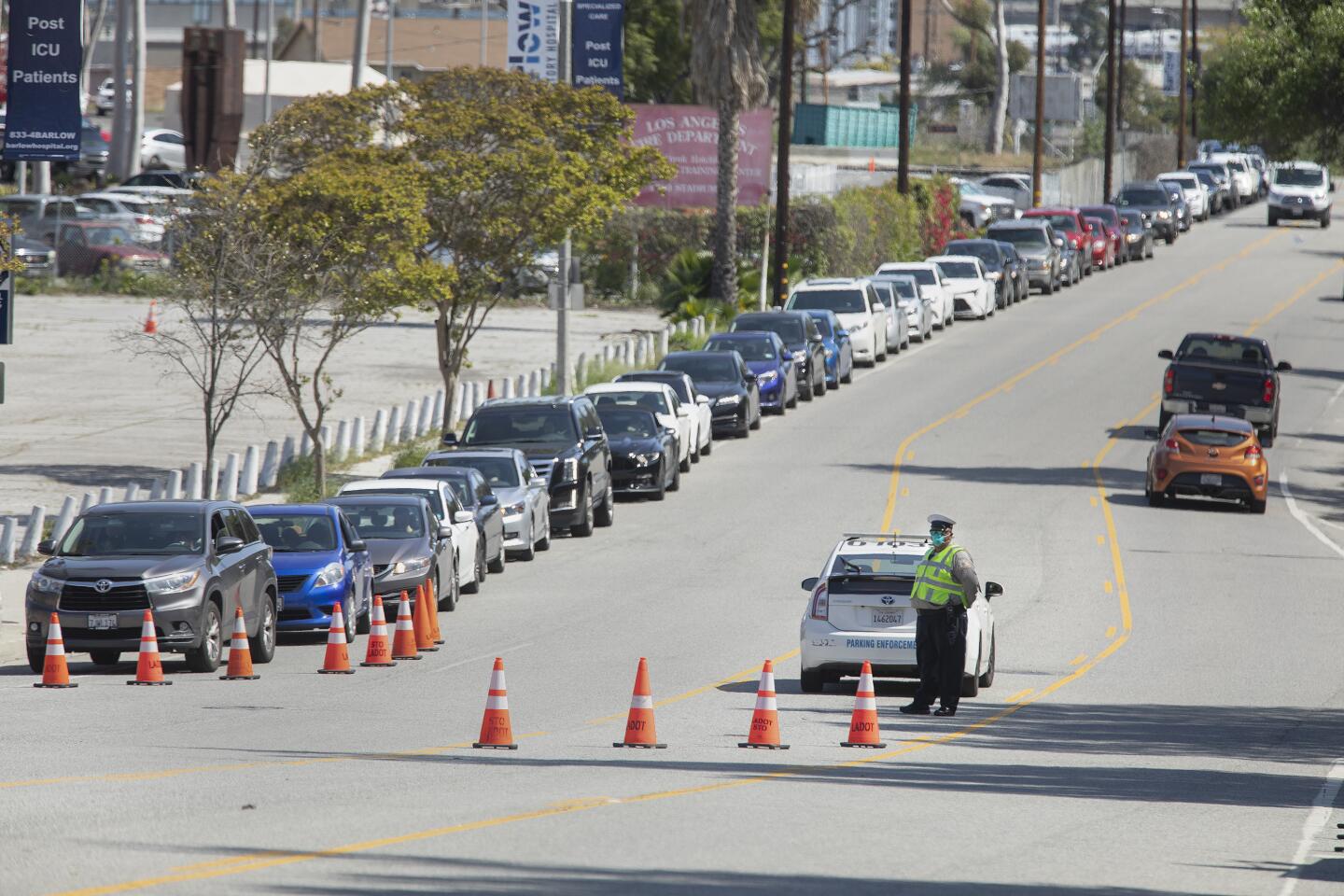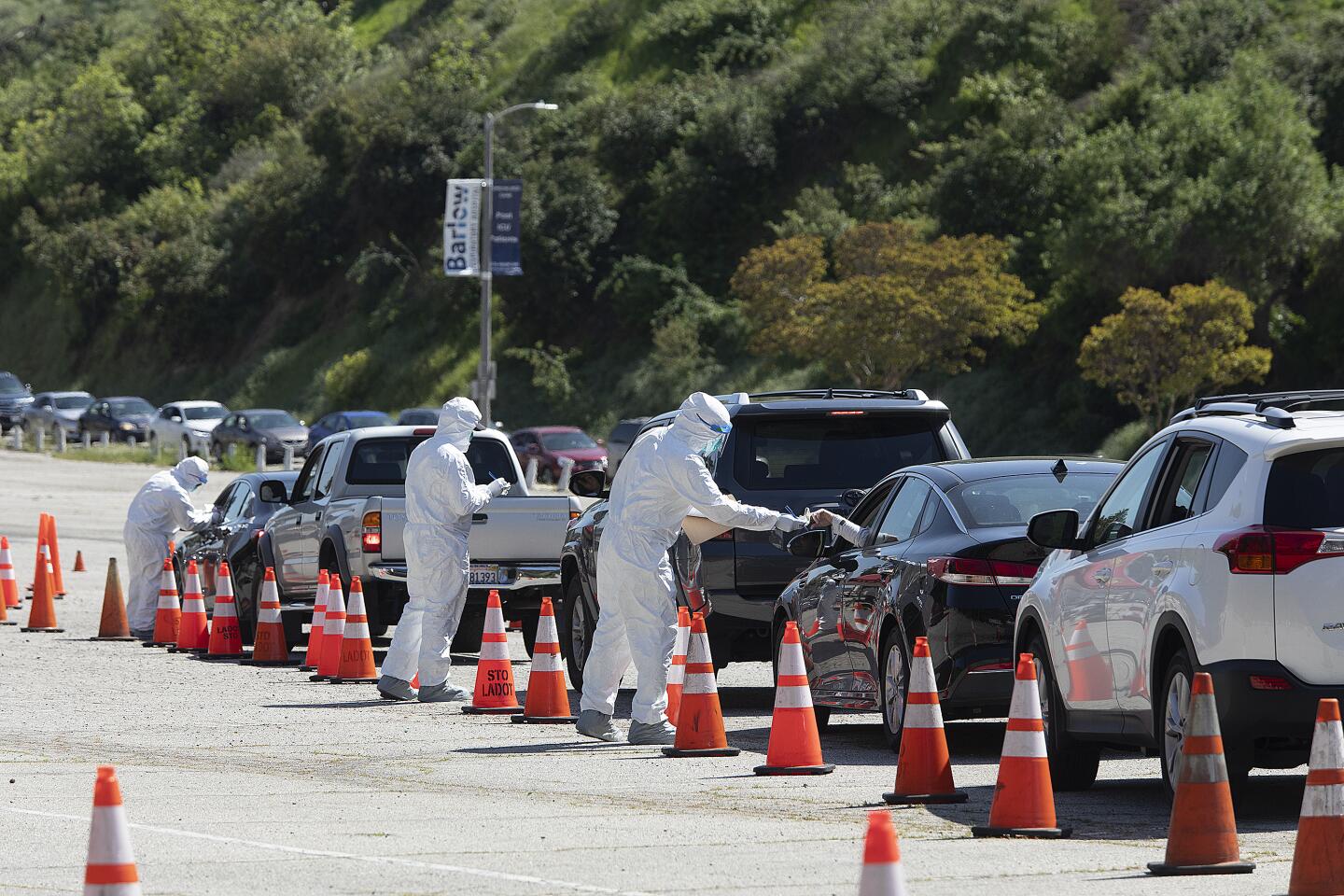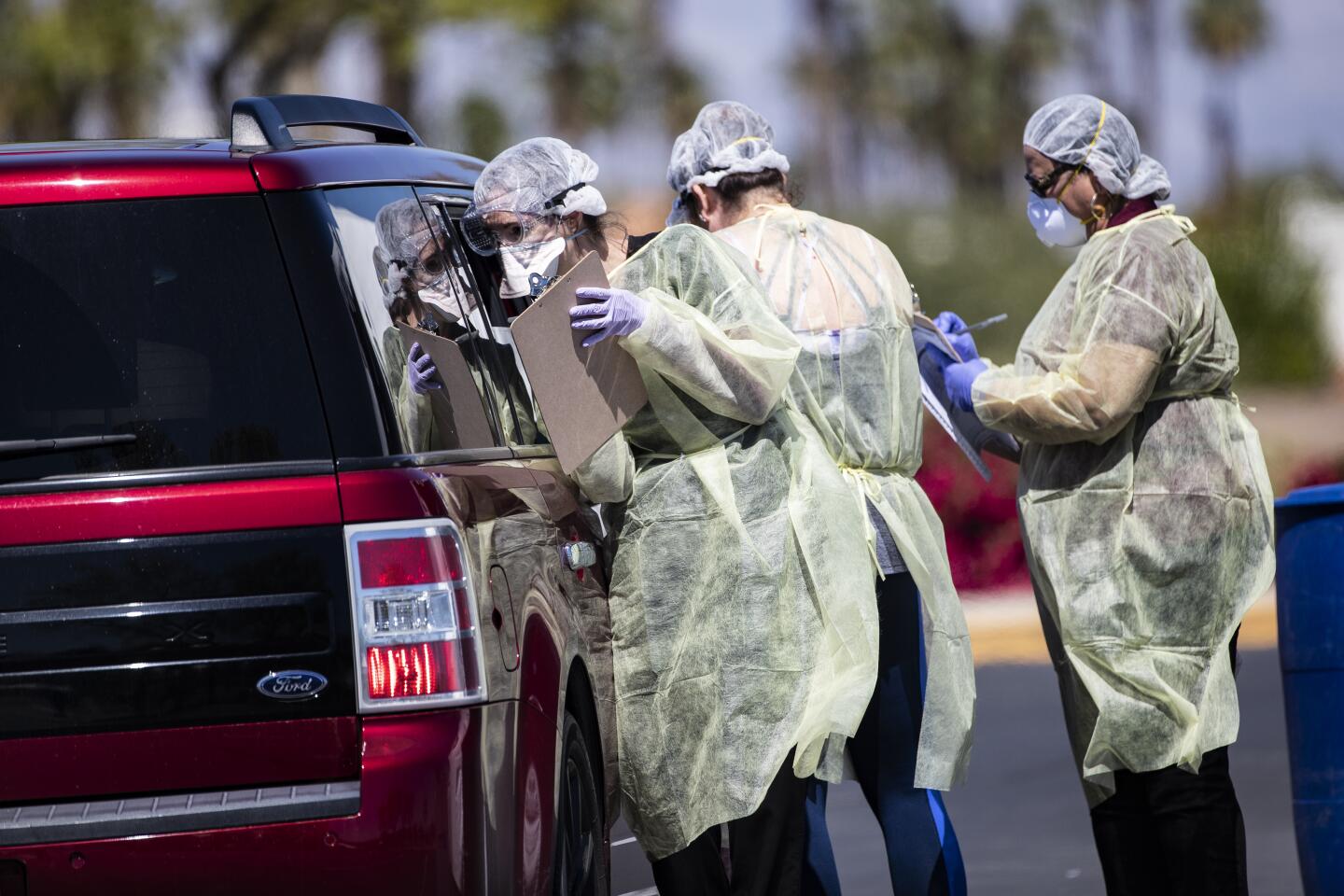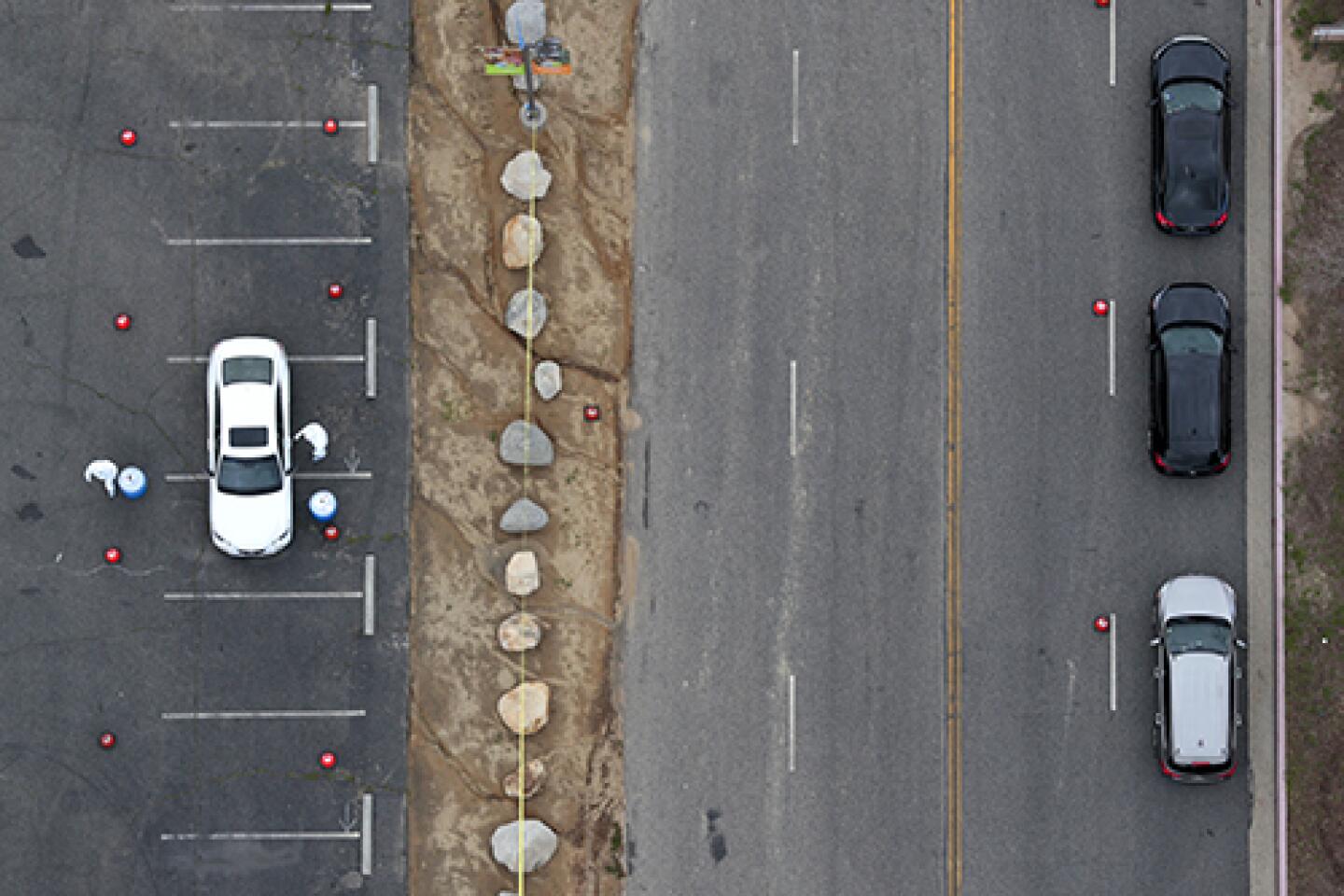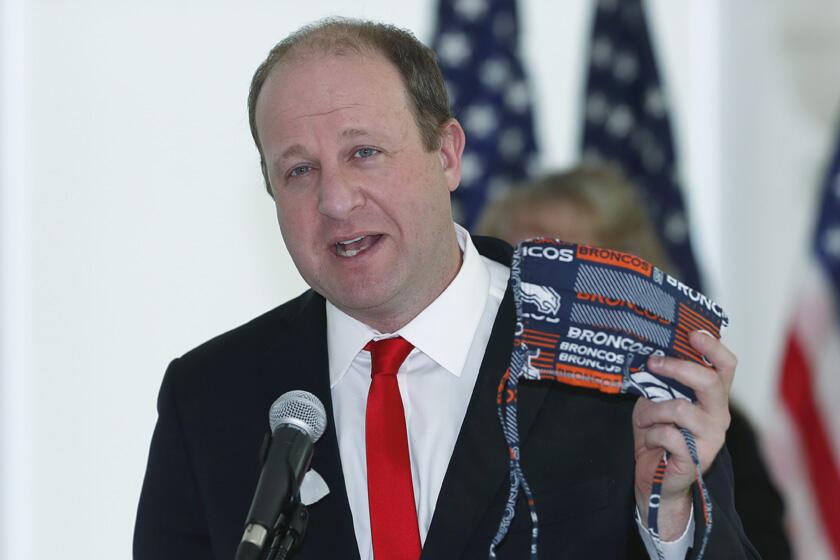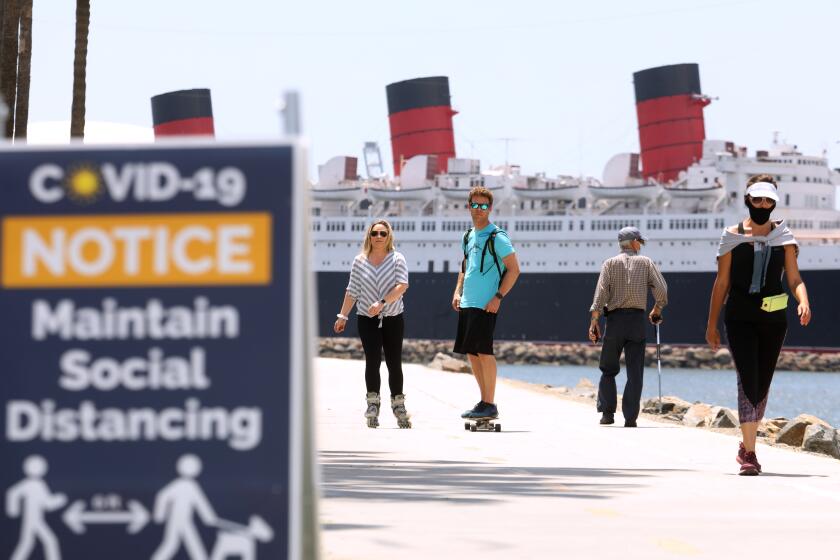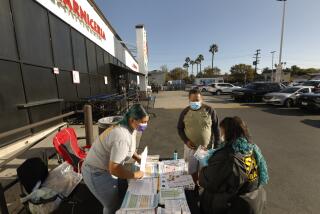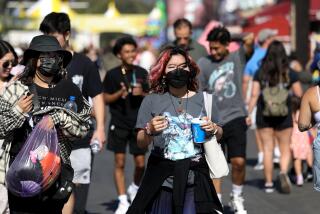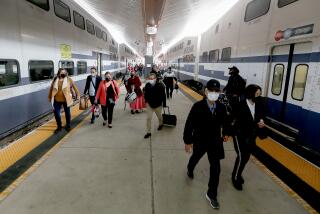L.A. County exceeds 1,000 coronavirus-related deaths
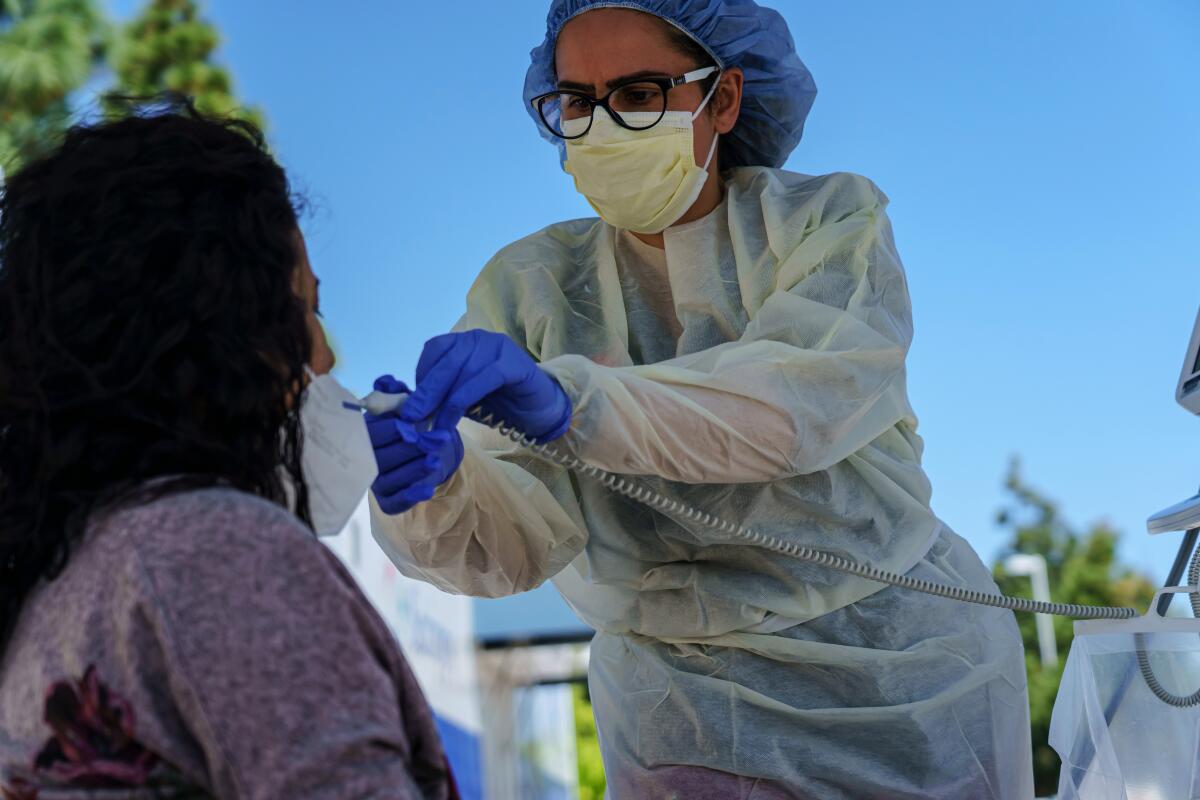
- Share via
Los Angeles County officials on Tuesday announced 59 additional deaths linked to the coronavirus, sending the county’s toll past 1,000 and marking another dramatic increase in the number of daily deaths reported.
Residents in institutional settings account for 46% of all deaths, the county said. The majority of the 462 who died in those facilities were nursing home residents.
Public health officials also reported 597 new cases of the virus, bringing the number of people who have been infected in the county to nearly 21,000. Of those, 4,507 have been hospitalized at some point.
More than 133,000 of L.A. County’s 10 million residents have been tested for the virus.
The news comes 40 days after California issued its stay-at-home order. When the mandate was implemented March 19 in an effort to stem the spread of the coronavirus, most counties went beyond the state’s guidelines to impose more stringent policies, each with varying expiration dates.
Some counties, like San Francisco, took measures well before the governor shuttered all nonessential businesses and mandated that all Californians should stay home and restrict their social interactions.
Now, several places have begun to ease local restrictions. Golf courses and beaches have reopened in some areas. Other areas are petitioning the governor to be allowed to open restaurants and places of worship
Many have argued their regions have already flattened the curve in the fight against the coronavirus and that the shuttered economy is hurting them financially.
L.A. Mayor Eric Garcetti announced Tuesday a deal with mask manufacturer Honeywell to procure 24 million N95 masks — at cost — to distribute to first responders and hospitals in need.
The city will get 100,000 masks in May, 500,000 more in July and 1.2 million per month by November, Garcetti said.
“These will be life savers, quite literally,” Garcetti said.
The announcement comes as hospitals grapple with a nationwide shortage of protective gear and a rise in price-gouging and counterfeit masks. Officials said L.A. County alone burns through 5 million masks a month.
Los Angeles County Sheriff Alex Villanueva announced an initiative Monday to decontaminate N95 masks that will allow first responders and healthcare workers countywide to safely reuse them up to 20 times as they battle the coronavirus.
All the while, the number of COVID-19 cases — and deaths — continue to climb in the state. There have been more than 46,000 infections and over 1,800 deaths in California.
The latest maps and charts on the spread of COVID-19 in Los Angeles County, including cases, deaths, closures and restrictions.
The state for the first time earlier this week reported that nearly 40% of deaths have occurred at skilled nursing facilities and assisted living facilities. As of April 28, 578 residents of nursing homes had died. As of April 25, 144 deaths had occurred in assisted living facilites. Additionally, 11 health care workers have died after contracting the virus in a nursing home setting.
The state has refused a request to identify where the deaths occurred. Also, the newly released data is incomplete, a Los Angeles Times analysis found, missing multiple facilities with known outbreaks and not including facilities with six or fewer beds, of which there are hundreds.
Mike Dark, staff attorney at California Advocates for Nursing Home Reform, a San Francisco-based nonprofit that advocates for people in long-term care, said during a town hall Tuesday that he believes the numbers represent an undercount.
While Gov. Gavin Newsom on Tuesday said there were outbreaks in 192 of 1,224 skilled nursing facilities in the state, Dark said he believes, “the virus is widespread in California facilities.”
The data also only includes deaths known by the facility, according to a state spokeswoman. It may not include deaths that occurred after a resident was transferred to a hospital, a private home, or other location.
Faced with the mounting toll, industry lobbyists have petitioned Newsom to protect them from liability.
Dark said that removal of liability would remove “one of the last safety nets residents in these facilities have.”
Garcetti said that nearly 5,000 residents and staff of skilled nursing facilities across the city have been tested, and officials are working to test more.
On Tuesday, Newsom unveiled a four-stage plan for reopening the state. The plan requires that all 58 counties have the ability to perform contact tracing to track the potential spread of the virus.
The first modifications of the stay-at-home order, affecting low-risk workplaces such as retail spaces and child-care facilities, are expected to roll out within weeks, Newsom said. But it could take months before higher-risk spaces, including movie theaters, concert venues and gyms, are reopened.
“Our stores will look different. Offices will operate differently. But we will be healthier,” Newsom said of what’s ahead.
One notable portion of the governor’s plan includes the possibility that K-12 schools will be allowed to begin the academic year early to make up for lost learning over the last few months.
In Los Angeles County — the state’s most populous region — officials are also developing a plan to ease the Safer at Home order, which is set to expire May 15. Public Health Department director Barbara Ferrer said Tuesday there were no plans to extend the current order, but as the deadline approaches, officials will reevaluate what is best for the county.
More than 20,000 in the county of 10 million have tested positive for the virus, and nearly 950 have died. County officials have warned the public that although social distancing practices have worked to slow the spread of the virus, the number of those who have been infected is likely far higher than the official count.
The Los Angeles County Board of Supervisors passed a motion Tuesday to establish an action plan to work with local businesses, labor partners and community leaders to lift restrictions.
Supervisor Janice Hahn, echoing an earlier statement by Newsom, said gradually lifting restrictions would not be like flipping a switch: “It’s more like a dimmer.”
While promising to review requests to modify the state’s stay-at-home order, Gov. Gavin Newsom remains loath to give a specific date.
“I would caution everyone from thinking that we have an end in sight, or we’re nearing the end of this unprecedented tragedy,” Hahn said. “This is not going to just go away. Coronavirus is going to be around forever, and without a vaccine to prevent us from getting the virus or a therapeutic drug to treat you, we need to really be cautious in how we reopen our society.”
The framework, co-authored by Supervisors Kathryn Barger and Hilda Solis, lays out a set of priorities:
- Reopening of the economy through an economic resilience task force
- Recovery through a permanent 501c fund
- Reinvention among businesses concerning how they function, including using continued telecommuting services
- Resurgence of the economy through a doubling of L.A. County Works initiative
- Resiliency concerning educational efforts for youth
“This is a dark time for everyone,” Hahn said. “I don’t think we should be persuaded by petitions or people pressuring us to reopen too soon.”
In six San Francisco Bay Area counties, stay-at-home orders have been extended through the end of May, with some restrictions expected to be lifted before then.
Meanwhile in El Dorado County, where infections have tapered off after 43 infections have been confirmed and zero deaths have been reported, the public health officer is allowing the county’s stay-at-home directive to expire Thursday, its original expiration date.
Lifting local restrictions are allowed as long as they don’t undermine the state’s guidelines, Newsom has said.
More to Read
Sign up for Essential California
The most important California stories and recommendations in your inbox every morning.
You may occasionally receive promotional content from the Los Angeles Times.
